







Designed by John Poniske









Designed by John Poniske
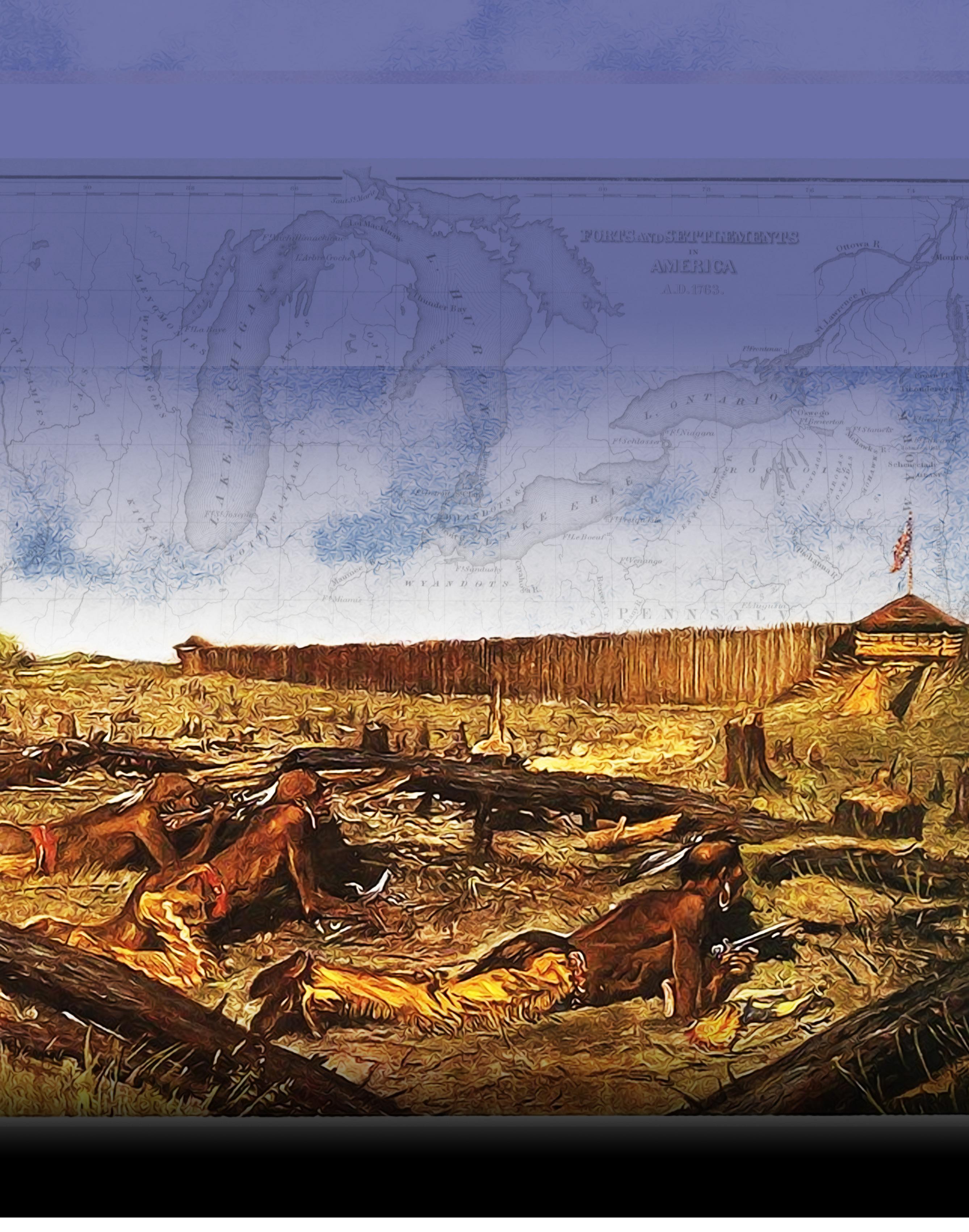

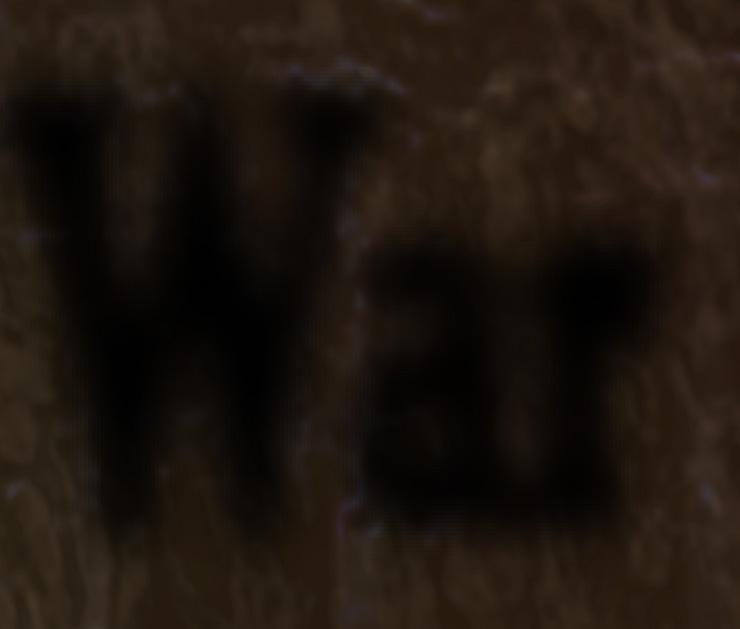

“I mean to destroy the English and leave not one upon our lands.” ~ Pontiac
“It is not in the Indian’s power to affect anything of consequence.” ~ Major Gladwin
The origins of the American Revolution are varied but none more important than the overlooked effects of Pontiac’s War. Hard on the heels of the bloody French and Indian War, British colonials in the American interior found themselves uprooted and terrorized a second time. Faith in the king and his vaunted army was fading. How did it come about? The Treaty of Paris signed in 1763 ended the Seven Years War and was supposed to restrict settlement in the Ohio and Allegheny valleys. France surrendered claim to the North American Midwest, but the land they laid claim to, the land England now claimed, belonged to multiple Native American Nations. Many of these Nations had been French allies and they felt betrayed. France may have surrendered in the French and Indian War - but the Native American Nations had not.
Native Americans saw the French as few but generous in nature. They made
Whereas the British treated them not as brothers but as lesser beings, frequently referring to them as “dogs” and “hogs.” The British unceremoniously curtailed diplomatic presents. Worse, the redcoats ceased trading the arms, ammunition and gunpowder on which the Native Americans had come to depend. Worse still, British subjects multiplied like locusts crowding the Nations, causing no end to internal conflict.
Rumors of a rising began as early as 1761 when the Seneca began circulating war belts among the Nations in the Ohio and Allegheny valleys and in the Pay’s d’en Haut (French “Upper Territory”). At the time, nothing came of it. Leaders were unhappy but not yet willing to go to war. Then came General Jeffery Amherst ‘s harsh, belittling policies, the tipping point. By 1763, two charismatic Native American leaders had galvanized native resistance: Neolin, a Lenape (Delaware) holy man, and Pontiac, an Ottawa war sachem. Neolin preached that Native American hardships were a punishment for accepting the white man’s ways. Pontiac circulated a new set of war belts with the message that the British were not only arrogant but weak. This time, the tribes listened.
Braves from the Ottawa, Seneca, Chippewa, Shawnee, Lenape Ojibwa, Menominee, Wea, Kickapoo, Mascouten, Piankeshaw , Miami, Potawatomie, Wyandot, Mingo, Mississauga, Huron and others took up the tomahawk and struck British posts before Amherst could react. Before long, nine frontier forts had fallen, and two key fortresses were besieged: Ft. Detroit and Ft. Pitt. Hundreds of settlements were also raided and burned. Terrified colonists streamed east.
When the British did react, they were ambushed and defeated time and again. Colonial frustration boiled over. One infamous incident had angry colonists slaughtering a congregation of converted “Praying Indians” near Lancaster, Pennsylvania. In another, suspicious colonists halted and destroyed a supply train rumored to carry illegal goods bound for the Nations. In yet another, smallpox infected blankets were distributed out of Fort Pitt. It was the commanding general’s express purpose “to try every other method that can serve to Extirpate this Execrable Race.” Before the struggle ended (in something of a draw), 450 British soldiers had lost their lives, 2000 settlers were either killed or captured, and 4000 more had been displaced.
On October 7, 1763, the Royal Proclamation of 1763 was issued to ease tensions. This determined a boundary line between the coastal British colonies and Native American lands west of the Appalachians. This created what the British called an “Indian Reserve.”
Unfortunately, this flew in the face of colonial expansion, angering colonials and doing little to stem colonial/Native American conflict. Between the Seven Year’s War and Pontiac’s rebellion the Crown spent 140 million £, with continuing garrison costs of £100,000 annually. These expenses led to the enforcement of the Navigation Acts, the Sugar Act, the Stamp Act, the Townshend Acts, and the Plantation Duty Act. Ultimately it was the Tea Act which infuriated the colonials, many of whom had already lost their homes and their faith in British guardianship. Boycotts and open rebellion against their distant government no longer seemed so far-fetched. Pontiac’s War attempts to recreate the reaction of Native American leaders to British mishandling of frontier politics and the impending colonial crisis it presaged. Will you encourage the rising tide or … stem it?



• 1 Game Board
• 1 Rules Book
• 3 unique Player Aids (2 x double-sided Combat Aid, 2 Off-Map Force Aids, and 1 Nation Activation Chart)
• 16 six-sided dice (8 red/British, 8 green/Nations)
• 100 cards (2 x 50 card decks (Nations & British))
• 24 1/3” cubes (8 black, 8 white, 8 red)
• 4 countersheets
2.1 Scale
British
Each Regular, Black Watch, Royal American, Militia & Ally FP represent 25-30 men (Company size) equipped with Brown Bess muskets. Each Artillery counter represents 4-6 guns. Each vessel represents one historical warship. Guinea Loan Markers represent an unspecified amount of royal funding. Forts represent structures of varying size and defensive capability – most were blockhouses or a collection of buildings behind palisades.
Nations
Each village space represents 5-10 separate villages and then only those interested in being on a war footing. War Sachems are representative of the many Nations leaders that participated in the conflict. Note they may not have been the Nation’s primary leaders but rather were respected men able to attract a war-oriented following. Each Warrior FP represents 40-50 warriors with firearms and/or bows, clubs, and knives. Some are quite skilled with rifles but often had insufficient powder and bullets to use their firearms. Note that the Lenape Nation is synonymous with the Delaware and the Ojibwa Nation is synonymous with the Chippewa.
The Nations
H Huron Wabash Confederacy
L Lenape KI Kickapoo
M Miami MA Mascouten
ME Menominee PI Piankeshaw
MG Mingo PO Potawatomi
MI Mississauga WE Wea
OJ Ojibwa
OT Ottawa
S Seneca
SH Shawnee
There are ten Nations and one confederacy included in Pontiac’s War. Each nation is a distinct Native-American culture differentiated by its own color and abbreviation.
Trail Space Distance
Approximately 60 to 75 miles, often involving difficult river crossings.
Ambush: Attempting to surprise an enemy force. Counts as one battle round. See 11.2
Arms Points: A simplified representation of Indian difficulty to obtain arms, powder and shot. See 11.5
Captives: Settlers , soldiers and officers taken during Indian raids; their return was key to bringing about peace. See 12.0
Combat Rounds: A battle may last one or two rounds at the discretion of the attacker. A successful or failed Ambush is considered one combat round. Besieging a fort is considered one combat round.
Concentration Markers: Instead of moving large stacks, Concentration Markers may be used on the map instead.
Disruption: Lacking military effectiveness (0 FP) due to casualties, poor leadership, fear or health.
Force: All the units of one faction (British or Indian) occupying one space.
Force Points (FP): Used in the Strength Determination Phase to determine the number of dice a player will roll in a given combat round.
Force Pool: All units not actively in play.
Fort Docks: Allows naval transport between Great Lakes forts
Fort de Chartres: The last French fortified position to surrender in the American interior.
French Militia: French residents who threw in their lot with the defenders of Fort Detroit.
Guinea War Debt: A broad representation of the expenses incurred defending the colonies.
Historic Sites: Locations of some of the more famous incidents that occurred during the conflict.
Key Leaders: The Ottawa Leader Pontiac and the Lenape religious leader, Neolin.
Militia: Colonial militia, hastily formed, rarely having military training.
Named Officers: These are historical British officers who fought in the conflict.
Nation: The proper designation for what was once described as an Indian Tribe.
Nation Activation: An optional rule described in 18.2 to determine the willingness of each Nation to join with Pontiac in the conflict.
Naval Transport Spaces: Allowing naval transport of troops between Philadelphia and Lake Ontario/Fort Niagara.
OH NO! Cards: Unfortunate historical events that players must deal with or pay the consequence.
Off-Map Forces: When unit stacks become unwieldy players can remove forces to one of the boxes on the Off-Map Force card and use the corresponding concentration markers to move on the map.
Off-Map Force Card: Card on which large concentrations may be placed to ease movement on the map.
Siege: Trapping defenders within a fort so that attrition occurs. Forcing a siege is considered one combat round. Requirements for a siege depend on the value of the fort.
Treaties: These represent mutual cessation of hostilities with specific Nations.
Unnamed Officers: These are less renowned Officers with fewer capabilities who replace dead leaders.
War Sachems and Villages: Indian Nations are represented by the sachems (Chief or leader), warriors and villages within that nation that support the war. Others within those Nations that preferred to remain neutral are not represented.
War Belts: displaying intricate patterns of shell beads (wampum) represented official invitations sent from one nation to another to join the war.
Objectives are scenario dependant. They may involve:
➢ Forced retreats
➢ Unit elimination
➢ Treaties struck
➢ Loss of Key Leaders: Pontiac, Neolin
➢ Regular Leader Loss: All other Sachems and Officers
➢ Structure Loss: Forts, Settlements, Villages
➢ French Surrender of Fort de Chartres
➢ Possession & Retrieval of Captives
In addition, when applicable, the Nations Player must meet his Razed Fort Objective, or the best they can hope for is a draw. The British Player must subtract their Guinea Loan total from their British Victory Point total.
Introductory Scenarios (20.0) can be found on page 16 while the Historical Set-ups (21.0) can be found on page 18.
Combat units display a 1 FP or 2 FP healthy side with corresponding reverse sides of 1 Disrupted or 2 Disrupted. If a single step needs to be taken from or added to a stack, change may be made from the respective Reinforcement Boxes.
If a 2 FP unit is required to take a 1 step loss and there are not enough 1 FP units of that type available in reserve, the player may be forced to take a 2 step loss. The more units on the board from a particular unit type the more often this will occur. The Nations Player is more likely to face this problem, which is fairer than you might think as the historical cooperation between Nations during the conflict was constantly strained.
Healthy Disrupted
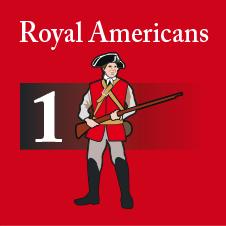


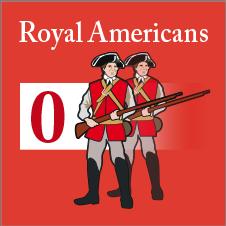
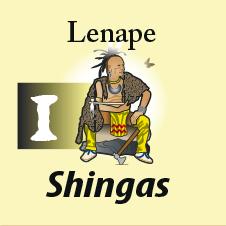
Sachems: Indian leaders, unlike British leaders, possess 1 FP but have no reroll ability. Sachems allow Nations to coordinate attacks. Without a nation’s Sachem, warriors may stack with other Nations but may not participate in coordinated attacks. Warriors stacked without a Sachem in a combined Nations’ stack may defend together with the other Nations but may not attack.
Indian Leaders have a healthy and a wounded side. Anytime a step-loss is required; one step-loss may be taken by flipping a leader from its healthy to its wounded side. An additional step-loss can be applied to a wounded leader, killing him. Note that wounds do not affect a Key Leader’s abilities but may lead to his death during a Winter Reinforcement Phase.
Key Leaders:
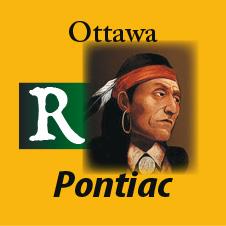
Pontiac, the Ottawa sachem, is a Key Leader. He has the same capabilities as British Officers adding +2 to all rally rolls in his space and a reroll capability allowing the reroll of two enemy combat dice in one combat round. In addition, he may add +1 to Ambush rolls and raise reinforcements (9.1). In Historical scenarios, Pontiac also serves as a British objective, affording the British 5 VP if captured/ killed.
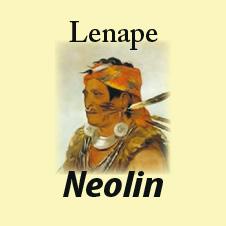
Neolin, the revered Lenape prophet, is a Key Leader. Neolin preached against European ways and the separation of the Indian and European races. He does not allow any combat rerolls. In Historical scenarios, Neolin also serves as a British objective, providing them 5 VP if captured/killed.
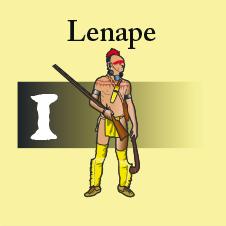
Warrior Bands are armed with a mixture of trade weapons, captured arms, tomahawks, war clubs and bows. Some Indians, particularly the Shawnee, were skilled in the use of rifles. However, Indians were dependent on European trade for powder and lead, and these were often in short supply. Depending on their size, warrior bands have a 1 or 2 FP side and a 1 or 2 disrupted side.


Indian Off-Map Forces: These are larger Indian forces represented by the symbols for Eagle, Bear, Wolf and Deer.
Both sides are encouraged to use their Off-Map Force counters and the related off-map boxes to avoid large unwieldy stacks, for ease of movement, and to increase fog of war.


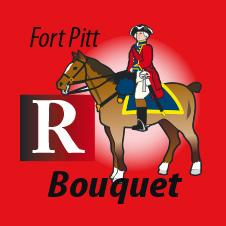
Named Officers: Named British officers possess no FP but do have a Reroll ability allowing the reroll of two enemy combat dice per one combat round and a rally capability adding +1 to non-militia rally rolls in their space OR +2 to a single unit. British Leaders have a healthy and a wounded side. Any time a step-loss is required; one step-loss may be taken by flipping a leader from its healthy to its wounded side. An additional hit may be assigned to a wounded leader killing him. A Wounded officer (with an X) may not use his Reroll ability. A wound also reduces his rally ability to a single unit with a +1 drm. A wound may lead to death during Winter Reinforcement Phase.
British Special Leaders:

Johnson: Special leader Sir William Johnson oversaw Indian Affairs and maintained close ties with the Iroquois Confederacy. Not a combat officer, he may still be used as one. He has no FP nor may he be used to rally units but he does have two unique abilities. He may retreat a force before combat without making a die roll. He may also be used to recruit Indian Allies when he is in Fort Niagara. Note: Recruiting Indian Allies still requires a Guinea Loan (9.2).

Rogers: Special leader Robert Rogers gained fame as a Leader of British Rangers during the French and Indian War. He has no FP but may be used to rally any British units including Militia, adding +2 to his rally rolls. He has two additional abilities: He may allow a British Ambush (even without Indian Allies) and he prevents Militia in his space from deserting.

Replacement Officers: When a named officer is removed as a combat casualty, an unnamed leader with reduced abilities immediately replaces him. The British Player has seven Replacement Officers. These officers retain the rally ability of named officers, but do not provide any combat rerolls. Replacement officers arrive in the space where the named officer died or in Philadelphia. Should a Replacement Officer die, he is immediately “reincarnated” in Philadelphia (player’s choice).
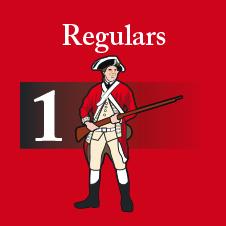
Regulars: Trained and disciplined British troops. A Regular FP represents one reduced company armed with the .75 caliber Brown Bess musket. Depending on the unit’s strength, Regulars have a 1 or 2 FP side and a 1 or 2 disrupted side.
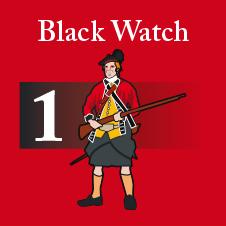
Black Watch: Scottish units with a fierce fighting reputation. Also known as Royal Highlanders. They gained their nickname from their dark green government-issue tartan. The Highlanders were armed with muskets. Depending on the unit’s strength, the Black Watch have a 1 or 2 FP side and a 1 or 2 disrupted side. They may be enhanced by card play.

Royal Americans: Known as The King’s Royal Rifle Corps, these soldiers were originally recruited in Germany and later augmented by British army rejects of Irish descent. The Royal Americans gained their
reputation in Canada and became one of the most renowned units in the British Army.
The Royal Americans were armed with muskets. Royal Americans may be enhanced by card play. Depending on the unit’s strength, Royal Americans have a 1 or 2 FP side and a 1 or 2 disrupted side.

Colonial Militia: A motley collection of frontiersmen, untrained and undisciplined as likely to disobey and desert as to follow orders and fight. They were armed with tomahawks, knives and muskets of varying quality. They have no special abilities, but multiple cards may lead to their desertion. Depending on the unit’s strength, Colonial Militia has a 1 or 2 FP side and a 1 or 2 disrupted side. They are most stable under the leadership of Rogers.

French Militia: Essentially the same as Colonial Militia with these exceptions: They are not Guinea purchased and are put in play through card play. They may never be moved outside of Fort Detroit. Once destroyed, they are removed from the game. Armed in similar fashion to colonial Militia. They have a 1 FP side and a 1 disrupted side.
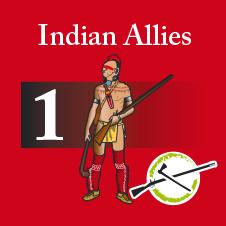
Indian Allies: Largely drawn from the Iroquois Confederation: the Cayuga, Mohawk, Oneida, Onondaga, Seneca, and Tuscarora. The Confederation supported the British in the French and Indian War, but a large part of the Seneca deserted the league dissatisfied with their treatment at the hands of the British. The Seneca issued the first War Belts in Pontiac’s rebellion.
Although armed in similar fashion to Warrior Bands, they are well supplied and have no need of Arms Points. Depending on the unit’s strength, they have a 1 or 2 FP side and a 1 or 2 disrupted side. Indian Allies are recruited solely in one of the three spaces adjacent to Fort Niagara (British mistrust of their Indian Allies will not allow them to shelter inside forts.) British Ambush capability is only available if Indian Ally FP and/or Major Rogers are present. When a British force containing any Indian Allies unit moves into a fort the Indian Ally units disperse automatically and are placed back into the Reinforcement Box. Indian VPs are not awarded.

Artillery: Field guns were 12 to 16 pounders serviced by teams of 10-12 men and officers. Guns stationed in larger fortifications were likely to be of a higher caliber. In combat each artillery fires once every combat round. The player rolls one die for each Artillery: Each roll of 1-2 has no effect, 3-4 retreats one opposing unit to an adjacent space; 5-6 retreats two opposing units. The Nations Player decides which unit(s) to retreat which also may include disrupted units. Artillery may absorb one hit in combat and are destroyed automatically. Note: The arrow logo on Artillery and Ships is a visual reminder that successful die rolls do not destroy FPs, but forces their retreat.


British Off-Map Forces: These are larger formations of British units represented by the following letters: A, B, C and D.
Both sides are encouraged to use their Off-Map Force counters and the related off-map boxes to avoid large unwieldy stacks, for ease of movement, and to increase fog of war.

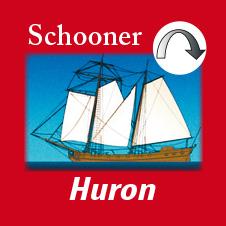
Ships: Although there were other warships, transports and gunboats employed on the Great Lakes during the conflict, only two warships were highlighted by historians: the schooners Huron (4 four-pounders and 6 swivels) and Michigan (6 four-pounders and 8 swivels). The Michigan was lost in a storm while carrying provisions to Fort Detroit. Several other ships were lost to fire and one was nearly captured due to a water- borne attack. The sloop Beaver and the schooner Boston were built and employed on the Great Lakes at this time. Ships act as waterborne artillery, rolling one die having the same effects as if it were Artillery. Each roll of 1-2 has no effect, 3-4 retreats one opposing unit, 5-6 retreats two opposing units. Retreated units may be disrupted units. The owning player decides which unit(s) to retreat. Ships may refuse battle to avoid being casualties. If they do so and the fort where they are stationed is razed, they are immediately transferred to another Great Lakes Fort. Ships have no disrupted side so if they remain in combat and when they are chosen to take a loss they are permanentely removed. The Nations Player earns 2 VP for its loss. Ships may automatically retreat before combat without a die roll. If one or more ships are the last remaining units after combat, they must retreat to the nearest available lake fort.

Supply: These are mule borne caravans or boat loads of arms, powder, shot, victuals, medicine, cloth, and trade goods; this was cargo necessary for the safety and well-being of frontier troops. Supply can be spent to absorb a step-loss, to prevent siege loss, and to prevent Winter attrition. Note: Using supply as step-loss is expensive as each supply step taken as a step-loss gives the Nations Player 1 VP for its loss.
Stacking is unlimited, except during wintering and inside forts (see Fort Combat 11.11). When stacks become unwieldy, remove them to the Off-Map Force cards and instead use the corresponding OffMap Force chits to indicate their presence on the map.
British Units:
All British units may stack together, including Indian Allies. Indian Units:
Units from different Indian Nations may stack together. If a nation does not have a Sachem present, that nation may not participate in attacks or ambushes with other Nations. Warriors from various tribes in the same space always defend together whether Sachems are present or not.
Players begin each scenario with a hand of Combat cards. Hand size in the Introductory Scenarios is three. Hand size in the Historical Scenarios is eight unless increased or decreased by card play. Depending on certain circumstances, combat may last one or two combat rounds. Prior to the first combat round players choose and simultaneously play one card. A player must choose and simultaneously play one card if he holds any cards at all. Cards are played to gain an advantage over one’s opponent. In most cases, players will play only a single card. However, sometimes response cards will be available.
The Indian head indicates that it is an Indian card.

Each card contains one of four icons representing the terrain on the board where card play is most effective (see 11.4). These are: Fort (use when attacking or defending a fort), Settlement (use when attacking or defending a settlement), Village (use when attacking or defending a village), Wilderness (use when attacking or defending any space not identified as a fort, settlement or village).
Cards without any terrain icons (Anywhere) may be used when attacking or defending any space including forts, settlements or villages. Depending on the circumstances, a battle might last one or two combat rounds. At the conclusion of a battle’s final combat round, players draw enough cards to reach their current hand size. Hand size may vary based on card instructions. If you need to play a card with a terrain icon that doesn’t match the current terrain, it may either be used as a Mulligan (when applicable) or be simply discarded without effect.
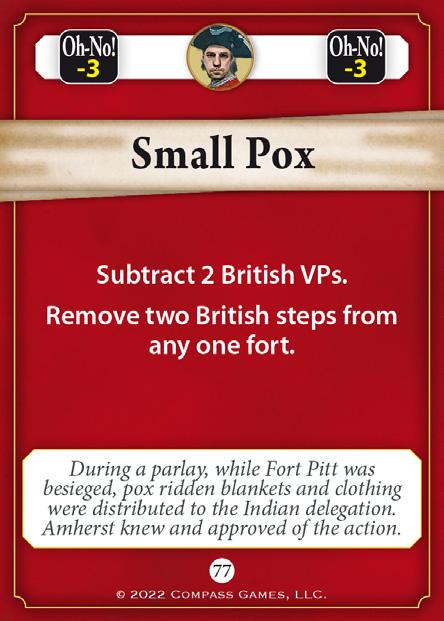
OH NO! Cards: These are special combat cards that force negative historical events on players. Players may choose to use these cards to activate these events or if held at the end of the season suffer their collective negative value. Negative values range from 1 to 3. OH NO! cards that are discarded due to card effects remain in the game. OH NO! Cards held until the end of the season causing VP loss are removed from the game.
Mulligans: On occasion players will have cards in their hand of no apparent value. When this occurs, a player has the option of playing such a card face down declaring it a mulligan. Basically, this is discarding the card in hopes of receiving a better replacement. Important: “If a player is behind in points, a Mulligan card grants you 1 additional die in Step 9 of the upcoming Combat Round. OH NO! cards may not be mulligans! Cards played that cancel an opponent’s card likewise cancels the mulligan ability granting +1 die roll.
Erratic Results:
A number of cards have erratic results based on the roll of a die. The


card owner rolls the die and applies the results.
For additional information on Combat Cards, see 11.4.
Note: The Nations player deck has French Cards in blue. The British player deck has British Trader Cards in brown.
➢ Indian Reinforcements (9.1)
1. (Optional Annual Activation)
2. Key Leaders
3. War Belts
➢ British Reinforcements (9.2)
4. Militia Volunteers
5. (Spring) Guinea Loans
➢ Indian Movement (10.1) /Combat (11.0)
Both sides Replenish cards
➢ British Movement (10.2) /Combat (11.0)
Both sides Replenish cards
➢ Supply (14.0) Siege Attrition (11.11)
➢ Rebuild Forts (16.1) & Rally (16.2)
➢ Lift Sieges (15.1), Wintering (15.2)
➢ Determine Victory Points (17.0)
➢ Advance the Turn Marker
Phasing Player: The player who is actively moving and/or attacking.
9.1 Indian Reinforcements
The Nations Player has three sources of reinforcements (four if using the optional Nation Activation rule):
Nation Activation: See 18.2 Reinforcements by Key Leaders:
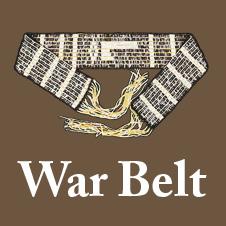

Pontiac may raise a 1 FP warrior band each turn from any one nation whose warriors or Sachems occupy Pontiac’s space. The reinforcing FP is placed in his space.
Neolin may raise a 1 FP warrior band of any nation of the nearest village to the space he occupies. In case of ties the Nations Player decides.
War Belt Reinforcements (Two counters available): Leave War Belts in the space they occupy on the Indian Reinforcement Track or relocate them to a different nation on the Track at the Nations Player’s discretion. The presence of one or both War Belts in a Nation’s village allows one Reinforcement roll for each. Add +1 to each War Belt Reinforcement roll if the Indians have fewer VP than the British.
➢ 1-2: Unsuccessful, no FP are recruited.
➢ 3-4: Successful, place a 1 FP warrior unit in one of that nation’s villages.
➢ 5-6: Successful, place a 2 FP warrior unit in one of that nation’s villages.
Newly recruited FP are available for activation and movement the same turn they arrive.
Card Reinforcements: Indian cards may also allow new reinforcements or the relocation of on-map units to reinforce Combat. These reinforcements are gained immediately during combat when the card is played.
Example: Pontiac chooses to raise another Ottawa FP in Pontiac’s space. He replaces a 1 FP Warrior unit there with a 2 FP warrior unit. Finally, Neolin occupies a space adjacent to a Lenape village. His influence raises a 1 FP Lenape warrior band in Neolin’s space. The Indian player identifies the Nations on which his War Belts rest. One is in an Ottawa village. He rolls one die resulting in a 3. The 3 allows him to add a 1 FP warrior band from his Ottawa Reinforcement Box to any Ottawa village space. His other War Belt is in a Mississauga village space but he wishes to raise Miami warriors, so he transfers it to the Miami square on the Indian Reinforcement track. He rolls a 6 and raises 2 Miami FP to be placed in 1 or 2 Miami villages. He chooses to raise both in the same village. This reinforcement turn the Indian player raised five new FP, nearly his entire reinforcement potential.
The British have three sources of reinforcements: Colonial Volunteers: At the beginning of each Reinforcement Phase the British Player rolls a die. On a 1-3 he raises 1 Militia FP. On a roll of 4-6 he raises 2 Militia FP. Add +1 DRM if the British Player is behind in VPs. American Militia arrives in any British settlements (red diamonds) at the British Player’s discretion.

Guinea Loan Reinforcements: Guinea Loan Reinforcements are purchased only during Spring Turns (marked with a guinea symbol) but placed in the Summer box on that year’s Season Track Reinforcement cost is one guinea per FP. Likewise, artillery and supply cost one guinea each. Guineas spent are considered Guinea Loans and are placed in the Bank of England Box. FP may be drawn from any available British unit type: Regulars, Black Watch, Royal American, American (not French!) Militia, Artillery or ships. If British leader Johnson is located in Fort Niagara, Indian Ally units may also be purchased. At the start of the following Summer turn, all reinforcements except Ships and Indian Allies arrive in Philadelphia. Ships arrive in Fort Niagara. Indian Allies arrive in any space adjacent to Fort Niagara.
Note: British expenditure on troops is limited to 25 Guineas per Spring turn. Also note that each new unit puts the British Player deeper in debt.
Example: It is Spring of 1764 and the war is going badly for the British. Sir William Johnson is in Fort Niagara. First the British Player rolls for raising Militia. The result is a 3 but because he is behind in VPs he adds +1 making it a 4. This gives him 2 FP of Militia which he places in a threatened southern settlement. He then places 16 Guineas in the Bank of England and 8 FP of Regulars, 4 FP of Royal Americans and 4 FP of Indian Allies on the Summer turn of the Turn Track. The British units will arrive in Philadelphia and the Indian Allies in a space adjacent to Fort Niagara.


Card Reinforcements: British cards may allow off-map reinforcements or relocation of on-map units to reinforce Combat. These reinforcements are gained immediately during combat when the card is played.


British forces may move up to eight spaces. They may move through an Indian village or Indian Force at the cost of +1 Movement point, as long as the defending force is less than the moving British force.
Amherst’s Draw-Down: This only applies in the Full Campaign Game (see 21.5).
Consolidation & Separation:
Undisrupted units of the same type may consolidate to reduce the number of units on the map. Disrupted units may also be consolidated, but only with other disrupted units, maintaining their disrupted status. 2 FP units may be broken down as needed, using off-map units to “make change.”
Picking Up & Dropping Off Units
Units may pick up and drop off other units during their movement.


Indian forces can move up to ten spaces. Forts, villages and Historic Locations (22.0) act as movement spaces. Indian forces may move through a British fort or settlement or enemy force at the cost of +1 Movement point as long as the force moved through has fewer FP than the moving force. This is essentially skirting enemy positions while the defenders brace for an attack that never materializes. Multiple combat cards allow additional bonus movement This movement occurs immediately when the card is played.



Escorted Captives may move up to seven spaces. Once located in a village, captive units need not be guarded and may be moved from village to village in that nation without any accompanying war band. When transferred to another nation, they must be escorted there by one of that nation’s war bands. Any number of Captives may be moved by a single war band. In combat, captives may not be used to compensate any step-loss. If left alone outside of an Indian village they are removed from the map and their VP awarded to the British Player.


British Ships: The British control two ships. These may move only by water between any two Great Lakes forts.

Naval Transport Spaces: The British may transport by water any of their units between two available naval transport spaces, from Philadelphia to Fort Niagara or vice versa. This represents travel along the New England Coast and up the St. Lawrence waterway. Ship counters are not necessary to make such moves because transport vessels are treated as an automatic game effect. When moving by sea, transported troops end their movement either in Fort Niagara or Philadelphia.
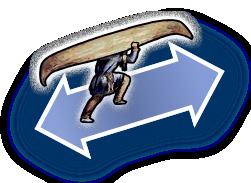

Portage Space: Units may also be transported between the Great Lakes Forts and Fort Niagara as long as the Portage space is free of Indian units.
Fort Dock Spaces: Great Lakes forts all are equipped with docks. Up to 10 British FP (consider each supply point or artillery unit to be one FP) may be transported between any two dock spaces, regardless of the distance. Transport vessels are treated as an automatic game effect. When moving between lakes, transported troops end their movement in the lakeside fort to which they are transported.
Transporting into a Siege: British units may be naval transported into a Great Lakes siege situation.
Note: Movement in these cases is not counted. Units/Ships from Philladelphia can travel to Fort Niagara and vice versa. Units/ships can travel from From Fort Niagara to any other Great Lakes Fort as long as the Portage space is not blocked. Units/Ships can move between any two Great Lakes fort including Fort Niagara as long as the Portage space is not blocked.
Ambush: The Nations Player may attempt to ambush the units transported into a siege (11.2). If successful, the British force must retreat to an space adjacent to the besieged fort if one is available. This ends the combat. If no space is available, the British must retreat into the fort. This too ends the battle. Units that cannot retreat into the fort are lost and VPs are recorded for each FP removed.



Retreat: The Nations Player may attempt retreat (11.3).
Ensuing Combat: If the Ambush fails, or if the Indian player elects to neither Retreat nor Ambush, one combat round ensues. After this round is resolved, the relieving British Force may join for the second combat round.
Combat takes place when the phasing player moves a force into an enemy-occupied space and declares an attack. Each combat is declared and concluded one at a time. Forces in multiple adjacent spaces may not combine their FP to attack a single space but multiple forces in other adjacent spaces may attack the same space separately. The Defender has the first option to retreat at the onset of each combat round. If the defender chooses to remain, the Attacker may then choose to retreat (see 11.3). If both forces remain, combat enters into another round. ALL movement ends when an attack is declared. Any remaining movement allowance for that force stack is lost.
➢ 1. Phasing player declares an attack.
➢ 2. The defender may choose to attempt retreat (11.3), ambush (11.2), fight, or enter a fort and offer siege (11.11). If attempting retreat or ambush, resolve this decision now.
➢ 3. Players simultaneously select and commit one card from their hand. (7.0)
➢ 4. Committed cards are revealed and card effects are resolved, beginning with the Phasing Player.
➢ 5. The Indian player may choose to commit Arms Points. (11.5)
➢ 7. The British player rolls for Artillery & Ship attacks. (11.6)
➢ 8. Determine Force Point totals. (11.7)
➢ 9. Players roll dice simultaneously. (11.8)
➢ 10. Remove casualties. (11.9)
➢ 11. Retreat Determination (11.10)
➢ 12. Second Round of Combat (when applicable)
Repeat from Step #3 if the defender has not retreated or ambush has not ended combat. Combat takes place (sequence will vary based on whether British are in or outside fort).
This combat sequence may vary depending on where the combat occurs. See 11.11 for specific rules on settlement, village, and fort combat.
Note: Inter-tribal cooperation, that is, attacking with different Nations, is only possible if sachems from the participating Nations are present (whether healthy or wounded). Warrior bands from differing Nations may occupy the same space without sachems and may even defend together, but are unable to coordinate attacks together without representative sachems being present. Yes, different Nations occupying the same space may attack separate targets in different spaces. The attacker determines the order of attacks. Both sides roll their full complement of dice during each attack. Casualties are removed before entering into a second round of combat.
An Ambush may occur when a force attempts to enter an enemy occupied space. A player must have at least half of the FP as the force it is ambushing. A successful Ambush ends combat and retreats the ambushed force. A failed ambush reduces the defender’s combat dice by one die for the following combat round. Ambush counts as one combat round.
Indian Ambush: Indians may always ambush as long as the Indian force contains at least half of the FP contained in the ambushed force. DRMs are an automatic +1 for the Indians, +1 for the presence of Pontiac, and +1 for committing an Arms point. If the Indians defeat any British force of 5 FPs or more and forces them to retreat, they earn 1 Arms Point.


British Ambush: The British may only attempt ambush if the British leader Rogers and/or any Indian Allies are present. DRMs are +1 for Rogers and +1 if any Indian Allies are present.
➢ 1-2 = Fails, ambushing force loses one step, proceed with movement or combat
➢ 3-4 = Fails, proceed with movement or combat
➢ 5-6 = Success, ambushed force loses one step. Return moving force to previous space and end movement or combat.
➢ 7+ = Success, roll one die to determine how many steps are lost. The ambushed force may not lose more steps than the number of FP in the ambushing force.
Example #1: A 4 FP British force, of which 1 FP is disrupted, attacks a 3 FP Indian force. Before combat the Nations Player declares an Ambush, commits one Arms point and rolls a die. The result is 5, DRMs are +1 for being an Indian force and +1 for the committed Arms point. So, the final adjusted result is 7. According to the Ambush results, a roll of 7-8 allows another die roll to determine the number of steps to be lost. The second roll results in a 4. This means that the British must lose 3 steps (no more than the number of FP in the ambushing force, which in this case is 3). Three British FP are flipped to account for three steps. Finally, the British force retreats one space toward the nearest fort.
Example #2: 9 British FP are ambushed and retreat. The Nations Player earns 1 Arms Point because the force was equal or greater to 5 FP (see 11.5)
When a force is attacked, it may attempt to retreat before Combat. If the attack takes place in a fort space, retreat into the fort is automatic (no roll, does not apply to the Nations player or Indian Allies). For all other retreats, the retreating force makes a retreat roll if necessary, then moves to an adjacent space if successful. Only ships can retreat by water. Retreat into a space with friendly units is allowed. If surrounded by enemy units, a friendly force may retreat through a space with enemy units but all retreating disrupted units are removed and all healthy retreating units are disrupted.
A force may not retreat through more than one enemy force 2FP or greater. A single FP can be freely passed through but like a village, still flips one retreating unit. Any healthy Sachems or Officers become wounded and any wounded leader dies. For every 5 FP of a British force that retreats before combat, award 1 VP to the Nations player, rounded down (Leaders count as 1 FP for this calculation, Indian Allies are included). See the back of this rulebook for an updated Retreat Table.
Indian Retreat: Retreating requires a die roll result of 1. Roll one die. Subtract 1 from the die roll if the Indians are behind in VPs and subtract another 1 if any Indian Sachem is present. Subtract 2 if the Sachem present is Pontiac or Neolin. DRMs are cumulative, so it is possible for the Indians to substract up to 3 from the retreat die roll.
Indian forces may retreat to an adjacent hex in any direction but may not retreat into a settlement or fort space. If made to do so, the force must move further to the next available open space.
British Retreat: Usually British officers were loathe to retreat. So a British retreat before combat is only possible in two cases:
➢ If the opposing Indian force is more than twice the size of the British force or Johnson accompanies the force the British may automatically retreat; no die roll is needed.
➢ If any Indian Ally or Rogers accompanies the force, retreating is allowed but requires a die roll result of 1. Roll one die. Subtract 1 if the British Player is behind in VP. Subtract another 1 for ANY Indian Ally or Rogers. DRMs are cumulative, so it is possible for the British to substract up to 3 from the retreat die roll.
British retreat to an adjacent space toward the nearest intact fort. A British Force may not retreat into a village hex. If made to do so, the force moves to the next available open space.
Example #1: A 2 FP Ottawa band accompanied by an Ottawa sachem is attacked by 4 FP of British regulars. The Indian player wishes to retreat but is ahead in VPs and has no key leader in his force so has little chance of retreating anyway. Fearing the worst, the Indian player decides to retreat and luckily the roll is a “2”. Since a sachem is present one may be subtracted from the die roll making the result a one. Retreat is possible. The Indian force successfully escapes to an adjacent space.
Example #2: A 3 FP British Regulars Force is attacked by an Ottawa sachem and 6 FP of warrior bands totaling 7 FP. The British Player wishes to retreat and may do so because the Indian force he faces is more than double his own FP This is an automatic retreat and requires no die roll. The British force moves to an adjacent space.
Example #3: A 4 FP British force of regulars commanded by General Gage is attacked by an 8 FP Seneca force led by Neolin. The player wishes to retreat but unfortunately he cannot because the Indian force he faces is exactly twice his size – not more than twice his size. Note, this rule reflects the disdain British officers had for Indian fighting ability.
Each combat round, the Attacker and Defender simultaneously play one card from their hand.




Fort Settlement Village Wilderness
The card played may only be used for its stated card effects IF the combat takes place in the terrain indicated. Fort=Square spaces with arrow corners. Settlement=Diamond spaces. Indian Village=Large colored circles. Wilderness=Small, dark brown circles + Devil’s Hole.
For the use of Combat Cards see 7.0.
Card Effects: Unless the Attacker’s card cancels the Defender’s card, the Defender’s Card effects will follow the Attacker’s card effects. If no ambush/combat takes place after an Arms Point has been committed, the Nations Player may restore the lost Arms Point.


Card Replacement: Players discard used cards and draw replacements at the completion of each player’s turn.
The Nations Player may subtract an Arms Point from the Indian Arms Point Track and commit it to any ambush or combat. The Arms Point will affect both rounds of combat in a battle. Arms Points can be earned but accumulation is limited to 12 Arms Points. The Nations Player may always commit an Arms Point prior to any battle if he/she has one to commit. By committing an Arms Point to an Ambush, the player receives a +1 DRM. If an Arms Point is committed to a combat, the Nations Player will hit on any rolls of 5 or 6 during the Simultaneous Dice Roll phase.
Accumulation of Arms Points: The following situations add Arms Points to the Indian Arms Point Track on the map:
➢ Add Arms Points equal to a fort’s Value once the fort falls.
➢ Add Arms Points as described by each Convoi des Cadeau Card.
➢ Add Arms Points as described by Trader or Provisions Cards
➢ Add one Arms Point for the defeat and retreat of any British force that contained 5 FP or more (Leaders count as 1 FP for this)
Also see 11.12 Fort des Chartres.
Erratic Indian Arms Points: Arms supply from the French officials as well as French and British Traders was sketchy at best. For this reason, Arms Supply cards indicates that a die should be rolled before adding the Arms Points. Results will vary based on card instructions.

Following card play the British Player rolls 1 die for every undisrupted artillery unit present. (Note: Ships are considered floating artillery):
➢ 1-2 has no effect,
➢ 3-4 retreats one opposing unit
➢ 5-6 retreats two opposing units
The owning player decides which unit(s) to retreat. Retreated units may be disrupted units. Units retreat to an adjacent space.


Players total their FP, which determines the number of dice to be rolled this combat round. Remember, American Indian units from any Nation without a Sachem present in the force cannot be included in this calculation.
11.8
Players roll their combat dice simultaneously. Pontiac and most British Leaders allow the reroll of up to two enemy combat dice that have resulted in “hits” in one round of combat. Only one leader per side may use his re-roll ability per combat round. If both sides use rerolls. The defender re-rolls first, then the attacker. Rotate the leader counter used 90 degrees to indicate that his ability may not be used in the second round of combat. Note: This does not mean to flip the leader to its wounded side.
Indian die rolls hit on a roll of 6 unless an Arms Point is committed (11.5). If an Arms Point is committed, Indian die rolls hit on a 5-6. British (including Indian Allies) combat die rolls automatically hit on a 5-6 unless affected by card play.
11.9
If the British force is located inside a fort, the British player will subtract the fort’s value from the number of incoming hits. equal to the value of any fort attacked. The defender removes casualties first. Each hit removes one FP step. The first step-loss flips an FP to its Disrupted side. All healthy units and leaders must be disrupted before receiving a second step loss. A second step-loss removes the unit to its respective Force Pool. A second step loss to Officers and Sachems removes them from play (The British can replace lost officers, the Indians cannot). The owning player decides how to apply step-loss. Unit removal awards 1 VP to one’s opponent. Points awarded for leader loss will vary (17.1 & 17.3).
Note: 2FP units (depicting two figures) have essentially 4 steps. They flip to their disrupted side after 1 hit, are then swapped for a 1FP unit on hit 2 (awarding 1 unit removal VP), which can then be flipped to its disrupted side on hit 3 before finally leaving play on hit 4 (rewarding a 2nd unit removal VP).
11.10 Retreat Determination


Settlement Combat: When an Indian Force attacks an undefended settlement with a minimum of 4 FP, cards are chosen and played. Once card effects take place, the British Player rolls one die which causes an Indian step loss on a 5 or 6. If it does and the Nations Player no longer has 4 FP attacking, the attack is called off and the Settlement survives. In any case, the Indian does not commit an Arms Point and the settlement is automatically razed if 4 FP strength is maintained, except in the rare instance where card effects prevents its destruction. When a settlement is razed, the Nations Player receives 1 VP and rolls for captives (see 12.0). If a settlement is defended, follow the same combat steps as if it were a field combat. Note: This applies only to British settlements. French settlements are ignored for game purposes.
Village Combat: Villages have no inherent defense. Defended Villages follow the same combat steps as if it were a field battle. Any undefended village space that is occupied by four or more British FP at the end of a turn is considered razed. The British Player receives 1 VP for each razed village. The Nations Player rolls no die and no prisoners are taken. VP value differs in the Campaign game (See 21.5)
Fort Combat: When an Indian Force moves to attack a fort space with British units on top of a fort. The British Player may choose to:
➢ attempt to ambush (if possible)
➢ accept a field battle
➢ ignore retreat rules and automatically retreat into the fort (thus they avoid the first combat round). Note: This retreat does NOT grant VPs to the Nations Player.
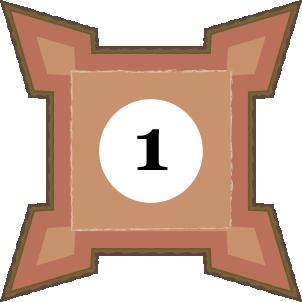

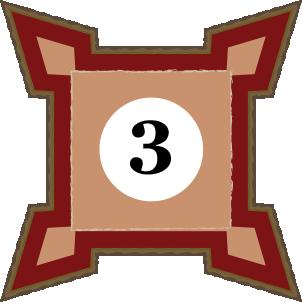
A fort can shelter 5x its value (healthy or disrupted):
➢ A 1-value fort can shelter 5 FP
➢ A 2-value fort can shelter 10 FP
➢ A 3-value fort can shelter 15 FP

When the British Player is faced with more than a 2:1 odds or the Nations player is faced with a loss of five steps in a single round of combat, an automatic retreat occurs. If neither case applies, players may still attempt to retreat, first the attacker, then the defender. If neither side retreats, players enter into a second combat round – repeating 11.6 through 11.9. Combat is limited to two combat rounds. At the end of the second combat round, the inferior force with fewer FP must retreat. If both forces have an equal number of FP, the Attacker must retreat.
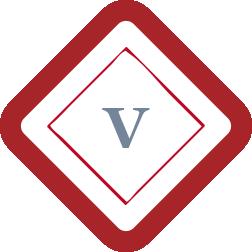
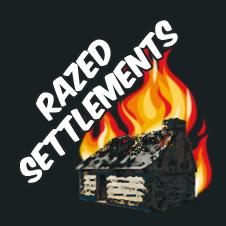
Field Combat: Combat that takes place in any space not considered a undefended village, undefended settlement, or fort is considered Field Combat and simply follows the combat steps previously listed.

Units that cannot shelter must attempt retreat to an adjacent space and if this fails, face the first combat round against the attacking force. Indian Allies are not allowed into forts and if they are forced to retreat without any accompanying British units they instantly desert and go home. This is shown by removing them to the British Reinforcement Box.
Once British units retreat into a besieged fort, a Siege marker is placed on top of the British units. The defending British force remains trapped beneath the Siege marker until the siege is lifted. The Nations Player is limited to one round of combat on the turn a Siege marker is placed. The value of a fort negates that many hits in each round of combat. Example: Fort Miami is besieged by six Indian FP. The Indian player commits an Arms Point, allowing Indian combat rolls to hit on a 5 or 6. Six dice are rolled resulting in a 1, 3, 3, 4, 5, and a 6, or two hits. One of the hits is discounted because Fort Miami is a 1-value fort. The Indian causes one step loss to the besieged force.
Siege Combat: When an Indian force attacks a fort that is already besieged, the British may neither ambush nor retreat. The Nations Player may choose to fight one or two combat rounds or not at all and simply remain in a besieging position on the fort.
Siege Attrition: As long as the Nations Player maintains a required besieging force, the besieged defenders remain trapped and subject to attrition. Minor 1-value forts require a minimum presence of 4 FPs to maintain a siege. Major 2 and 3-value forts require a minimum presence of 8 FPs to maintain a siege. When the besieging force falls below the minimum FPs, the Indian force must retreat to an adjacent space.
At the end of each season the defending force in each besieged fort automatically loses 1 combat step for each 3 combat steps in the force, rounded up with a minimum of 1 step-loss. Each FP and each healthy Officer or Sachem is considered two combat steps. Each disrupted unit, artillery or ship is considered 1 step. Supply steps are not vulnerable to siege attrition. In fact, each committed supply step will prevent the attrition of two combat steps.
Example: The Nations player is besieging Fort Detroit. When it comes time for seasonal attrition, the British Player counts his force’s steps: 3 healthy Regulars (6), 1 disrupted regular (1), 1 artillery (1), 1 healthy officer (2), 1 wounded officer (1), 2 ships (2) and 2 Supply (0), for a total of 13 steps. Since attrition demands a loss of 1 step for every 3 steps present - rounded up, the British must lose 5 steps. Luckily, each of his 2 supply negates two of those losses. Because of this, the British removes the 2 supply counters to the British force pool and flips only 1 Regular.

Razed Forts: When a fort no longer has any British FPs present, it is considered to have been overwhelmed and falls, place a Razed Fort marker on the fort space. When a fort is razed, the Nations Player receives VPs and Arms Points equal to the fort’s FP value. The Nations Player may also receive Captives (see 12.0). The fort can no longer shelter or protect British troops until it is rebuilt. Advance the marker on the Razed Fort Track (see 16.1)


Fort Niagara: Originally built by the French in 1759, Fort Niagara was preceded by two other forts dating to 1687. Fort Niagara served as both a military and a diplomatic post dealing with the powerful Six Nations Confederacy.
This formidable British fort may not be attacked Historically Fort Niagara’s size, defenses, and defending force made it impregnable to any Indian attack.

Fort de Chartres: A massive stone structure, Fort de Chartres was built on the foundation of three prior wooden forts, the first erected in 1720. Fort de Chartres served as the seat of French government and its chief military installation in Upper Louisiana (or Illinois country) from 1753 until 1765 when it was finally occupied by the British following the end of the Pontiac’s War.
This formidable French fort may not shelter any Indian FP, nor may it be attacked by any side. The British Player needs only enter the space with at least one officer and any number of FP. At that point, Fort de Chartres becomes a British fort and the British Player is awarded 5 VP. In addition, when the British take possession of the fort, any arms
shipments that would arrive via French and Trader cards (blue/brown) have their die roll modified by -1. The British officer and at least one unit must occupy the fort permanently or the five points earned are removed from the British VP track and there’s a -1 DRM on the French and Trader cards no more.
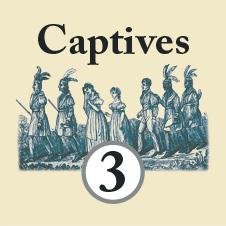
Men (although men were typically killed not captured), women and children captured when razing a fort or a settlement. The Indians often took captives to act as slaves and eventually incorporate them into their Nations. The number of captives taken is based on the space razed. Captive units have no combat ability. The British rarely took captives. One British objective is the recovery of captives.
Obtaining Captives:
After Razing a Settlement, roll one die:
➢ 1-4 = no Captives
➢ 5-6 = 1 Captive taken
After razing a Fort, roll one die. 1-2 = no Captives
➢ 3-4 = 1 Captive
➢ 5-6= # of captives equal to the fort value
Disposition of Captives: When captured, Captives are immediately divided between the Nations participating in the attack, the majority going to the nation who committed the most warriors. In case of a tie between Nations, the Nations Player chooses their disposition. Once assigned to a nation they must be immediately escorted to a village in that nation by one war band guard unit from that nation. One war band can guard any number of captives using the seven space movement described below.
Captive Movement: Any force containing captives uses the captive’s rate of movement of seven spaces. Indian guards use this captive movement to return to their respective villages.
Captive Release: At any time during the British Player’s movement, the Nations Player may offer a British force the release of captives under the following conditions:
➢ The British Player must agree to the offer.
➢ The captives to be released must be within eight spaces (travel distance) of a British field force. Releasing 1 captive earns the Nations Player 0 VP. Releasing 2 captives earns the Nations player 1 VP.
➢ The Captives offered must be located in the nation nearest the British Field Force. The British Player earns 1 VP for each captive released.
A die is rolled and the Captive Release Roll is consulted.
Captive Release Roll:
➢ A result of 1-2 = non-compliance and the Nations Player earns 1 VP.
➢ A result of 3-4 allows the Nations Player the choice of releasing 1 or 2 Captives.
➢ A result of 5-6 forces the release of all Captives from that Nation.



Captive Release Result: Released Captives are transferred to the British force that entered into negotiations (indicated by the Nations Player). Each Captive acquired earns the British Player 1 VP but obligates him to assign a minimum of two healthy FP (or the entire force, if not enough FP are available) to immediately escort any number of Captives back to the nearest fort. The British Player may opt to send his entire force with the captives if he feels the mandatory escort will leave it too vulnerable. Once captives and their protective escort reach that fort, the captives are removed from the map.
Combat With Captives: If a Native force containing captives is attacked, one FP acts as a guard and withheld from battle. If the Indian Guard is attacked after its accompanying force is destroyed, the Guard FP will defend itself but the captives escape to the British and VPs are awarded. If a British force containing captives is attacked, two FPs act as guards and withheld from battle. If the British Guards are attacked after their accompanying force is destroyed they will defend themselves but the captives are recaptured.
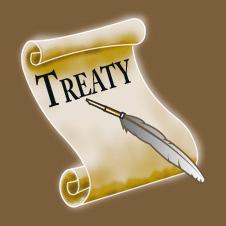
When a Nation’s last village is razed, a Treaty is struck with that nation. Any Sachems and Warrior Bands in the nation’s villages are removed to that nation’s space on the Indian Reinforcement Track. All Sachems and Warrior Bands in other spaces remain in play and hostile. A Treaty marker is placed on the nation’s space on the Indian Reinforcement Track. The nation may not receive any War Belt and will not provide reinforcements to Pontiac or Neolin. All Captives of the Nation are freed imediately and the VPs for them applied to the British VP Track.
Due to card play it may be possible that the Treaty is broken and the nation returns to the board.
Important: There’s no one Treaty for all the Nations of the Wabash Confederacy. Each nation must be treated separately.
Indian units remain in supply regardless of their location. British units more than six spaces from a British fort not currently under siege, requires the same attrition as besieged forces – the loss of one step for every three combat steps present, rounded up, during the supply phase, with a minimum loss of at least one step. British forces may trace through Indian forces but each Indian controlled space, including non-razed Indian villages, counts as 2 spaces. A British force loses one combat step for each Indian controlled space traced through. If a force carries supply, supply steps can be spent to prevent step-loss. Each supply point spent prevents the loss of two steps. Note that British forces may trace to Fort de Chartres once it is British controlled. Spending supply points does not give the Nations Player VPs.
Example: A large British force containing 30 steps and three supply is advancing on Fort de Chartres. Finding themselves out of supply at the end of the season the British Player determines he must lost 10 steps. He spends his 3 supply to negate 6 of his expected step losses and flips four of his units.
Remove all siege markers from the map.


British and Indian Forces rarely campaigned in the Winter months. They instead returned to their villages, settlements and forts to await the Spring. Indians: All Indian units return to their Nation’s villages – a village limit is a maximum of four FP and any number of Sachems. Excess FP, those that cannot find village space, are placed back in the Indian Nation’s Reinforcement Box. Note: Units belonging to any Nation that has no remaining villages due to Treaties may winter in any Indian villages still at war with the British.
British: British units outside of forts may return to the nearest fort. If two or more forts are equidistant, the British Player chooses their destination. A fort may winter FP 5X its value, using the original unit FP value, whether healthy or disrupted (ex: a disrupted 2 FP unit counts as 2 FP for this purpose). (For example Fort Ligonier (value of 2) could winter up to 10 units.) If FP bound for a fort will exceed this they retire to the next nearest fort. Philadelphia may winter an unlimited number of British FP. British forces may stay in the field but will suffer attrition. This attrition can be reduced by expending supply (see 14.0).
Indian Allies: All Indian Allies are removed to the British Reinforcement Box. Their services will have to be repurchased.
16.1 Fort Rebuilds

Both the British and Nations Player should keep a close eye on the Razed Fort Track. The Nations Player is required to have a certain number of razed forts by the end of the 1763 scenario. If the Nations Player cannot achieve or maintain this level, the best outcome will be a draw regardless of the point differential.
The British Player may in this phase rebuild razed forts. To rebuild a fort, a Razed Fort marker must be occupied by British FP at least three times the Fort’s value and 1 Guinea Loan added to the Bank of England for each value point being rebuilt. Rebuilt forts do not affect the Razed Fort Track.
Razed settlements and villages may never be rebuilt.
16.2 Rallies
Rallying means flipping a unit from its disrupted side back to its

healthy side. Units may rally without an Officer or Sachem on a roll of 5-6. Healthy officers and Sachems add +1 to each die roll when attempting to rally more than one disrupted combat unit in the space they occupy, succeeding on a 4-6. They may add +2 when attempting to rally a single combat unit in the space they occupy, succeeding on a 3-6. If only 1 FP of a 2 FP unit is rallied, make change from the respective Reinforcement Box if necessary. Wounded leaders add only +1 to a single unit, succeeding on a 4-6. Additional leaders in the same space may also attempt to rally but no unit may undergo more than one rally roll during the Rally Phase. Leaders may only rally combat units in the space they occupy. Reroll ability may not be used during the rally phase.
Indian Rallies: Indian Sachems may only attempt to rally Warrior units from their own nation. Pontiac and Neolin may rally Warrior units from any nation in their stack.
British Rallies: British Leaders may attempt to support rally of any disrupted British unit but no Militia or Indian Allies. Only Rogers may help rally Colonial Militia or Indian Allies.
Leader Health: Players roll one die for each wounded leader. On a roll of 4-6 the leader has recovered from his wounds and is flipped back to his healthy side. On a roll of 2-3, the leader’s illness lingers and he remains wounded. On a roll of 1 the leader dies and is removed from the game, VPs are awarded for leader deaths (see 17.1 & 17.3). The British Player replaces any dead named officer with a Replacement Officer. The Nations Player has no Replacement leaders which reflects the erosion of interest in carrying on the war.
Siege Rallies: Combat units may rally normally but besieged officers are penalized. Under siege a healthy officer may add only +1 to a single unit. Wounded officers under siege may not attempt to rally. Besieged and out of supply units rally with a -1 DRM.
Place Victory Points (VPs) as they are earned on the Victory Point Track. The Indian green markers will use the green track. The British red markers will use the brown track. See point awards below:


➢ 2 VP – British ship lost in combat. (VPs are not awarded if loss is due to a Combat Card)
➢ # VP – VP equal to the fort’s level when the fort is razed
➢ 2 VP – Officer Death whether killed in combat or due to seasonal attrition
➢ 1 VP – Officer Wounded
➢ 1 VP – Razing a settlement
➢ 1 VP – Each supply step eliminated in combat or retreat
➢ 1 VP – Each British unit eliminated in combat
➢ 1 VP - Every 5FP of British units that retreat, rounded down. Leaders = 1FP for this calculation. Indian Allies are included.
17.2 Indian VPs - End Scenario
➢ 2 VP – Each Captive Point
➢ VPs equal to OH NO! point value of opponents Combat Cards in hand at end of the game
➢ 1 VP – Every 3 or 5 Guineas of British War Debt (depending on scenario), rounded up
17.3 British VPs - award immediately
➢ 1 VP – Each Captive Point when it becomes British controlled
➢ # VP – VP equal to a fort’s level when the fort is rebuilt
➢ 2 VP - Death of an Indian Sachem, whether killed in combat or due to seasonal attrition
➢ 5 VP – Death of Pontiac or Neolin, whether killed in combat or due to seasonal attrition
➢ 1 VP – Each Indian unit eliminated in combat
➢ 1 VP – When a village is razed
➢ 2 VP – When a Treaty is signed. (Destruction of the last of a Nation’s war villages)
➢ 5 VP – Taking possession of the French Fort de Chartres. The VPs are lost if the British Player abandons the fort
17.4 British VPs - End Scenario
➢ VPs equal to twice the level of un-razed British Forts (1763 End Scenario only – see 21.2)
18.1 British Overconfidence
In 1863 (on turn one), the British player is limited to borrowing no more than 10 Guineas as Amherst is overconfident and unwilling to acknowledge the increasing Indian threat. After turn one, Amherst is replaced and the British player may take on loans up to 25 Guineas on the next two spring turns. (Chit included to track this)
18.2 Nation Activation
When using this option, place the Activation Chart and the white, black, and red cubes near the Nations player. The Nations player must seek the cooperation of allied nations at the beginning of each year. Do so by referring to the Indian Activation Table. First, find the column under the year currently in play. If a Nation box is blank, that Nation is already willing to move and battle normally. If a Nation has a question mark beside it (?), a die must be rolled to seek its cooperation (allow the British Player to make the rolls) and a cube designating its status is placed beside it on the board’s Reinforcement Track. Add +1 to the die roll if Indian VPs exceed British VPs or -1 if British VPs exceed Indian VPs. Consult the chart for the resulting effect.
Note: There is no die roll modifier if the score is tied.
➢ Effect #1 - A Result of 4-6: Movement and Combat are unaffected (White Cube).



➢ Effect #2 - A Result of 2-3: Movement is unaffected. Only Defensive Combat allowed (Black Cube)
➢ Effect #3 - A Result of 1 or less: No Movement. Only Defensive Combat allowed (Red Cube). Note: Warbands belonging to this nation already in the field automatically return to their villages.
Dispense with all Combat cards. Award the Nations Player two new Arms Points during the Reinforcement phase of each new Season. Once the British take Fort de Chartres (11.12) , the Nations Player must roll to see if the French cooperate to provide arms:
➢ 1-2 = No Arms
➢ 3-4 = One Arms Point
➢ 5-6 = Two Arms Points
18.4
If the British Player is more experienced, allow the Nations Player one or more of the following::
➢ Indian Sachems are worth 2 FP (not 1 FP). Wounded Sachems are worth 1 FP.
➢ Add +1 DRM to every War Belt Roll.
➢ Take captives from all razed forts without rolling - number of captives is equal to the value of the razed fort. Each razed settlement yields one captive.
➢ Rifle proficiency: Add 1 additional die when determining force point totals if Shawnee or Lenape warrior bands are present.
➢ At the end of each season, award the Indians +1 VP for each Arms Point over 5 the Nations Player controls.
If the Nations Player is more experienced, allow the British Player one or more of the following:
➢ Give all healthy British leaders +1 FP.
➢ British may retreat, regardless of the odds.
➢ Bayonet charge: +1 DRM to the second combat round of each field battle.
➢ At the end of each season, penalize the Indians -1 VP for each Arms Point the Nations Player falls below 5.
If either Fort Augustus or Fort Bedford are razed, the British are forced to add 10 Guinea coins to the Bank of England to defend the largest city in the English colonies. A reaction force of 8 FP (player’s choice) and 2 Supply will arrive in Philadelphia the following turn. Place the 8 FP force on the Turn Track to denote this.
Anderson, Fred: Crucible of War, Vintage Books/Random House, 2001.
Bouquet, Henry: A Study of Three Military Campaigns in North America, 1758-1764, thesis presented to the Faculty of the U.S. Army Command and General Staff College, Patrick H. Hannum, Major USMC,1991.
Bouquet, Henry: The Orderly Book of Colonel Henry Bouquet’s Expedition Against the Ohio Indians, 1764, (Carlisle to Fort Pitt) by 1765
Church, MAJ Thomas R.: Operational Art in Pontiac’s War, monograph by US Army, School of Advanced Military Studies, 2015.
Dixon, David: Never Come to Peace Again, University of Oklahoma Press, 1994.
Dowd, Gregory Evans: War Under Heaven, John Hopkins University Press, 2002.
Eckert, Allan W.: The Conquerors, Bantam Books, 1970
Parkman, Francis: The Conspiracy of Pontiac volume I, University of Nebraska Press, 1994.
Parkman, Francis: The Conspiracy of Pontiac volume II, University of Nebraska Press, 1994.
Preston, David: Braddock’s Defeat, Oxford University Press, 2015
Silverman, David J.: Thundersticks, Belknap Press of Harvard University Press, 2016.
Swanson, Neil H.: The First Rebel, together with the biography Colonel James Smith, Ferrar & Rinhart, 1937.
Websites
Native American Netroots: https://nativeamericannetroots.net/ diary/1848
Ohio History Central: http://www.ohiohistorycentral.org/w/ Pontiac%27s_Rebellion
Operational Art in Pontiac’s War: http://www.dtic.mil/dtic/tr/fulltext/ u2/1001264.pdf
Pontiac’s Rebellion and Smallpox as a Weapon: https://www.thoughtco. com/pontiacs-rebellion-smallpox-as-a-weapon-1222027
Wampum Belts: https://www.indiantime.net/story/2012/03/15/culture/ wampum-belts/031820120609406924480.html
War in 1763: https://www.jstor.org/stable/1897544?seq=1#page_scan_ tab_contents
Wikipedia: https://en.wikipedia.org/wiki/Category:British_forts_in_ the_United_States
Weblinks
Gardener Digital Library: http://gardnerlibrary.org/journal/jamessmith-and-black-boys-rebellion-pennsylvania-frontier-1763-1769

Encyclopedia of Greater Philadelphia: Paxton https:// philadelphiaencyclopedia.org/archive/pontiacs-war-and-the-paxtonboys/
JSTR: Pontiac’s Rebellion and British Troop Moves During Pontiac’s Rebellion
Credits
Designer: John Poniske
Co-Developers: Bill Morgal & Tom Thornson
Artists: Knut Grünitz, Bill Morgal
Consultant: Curtis Milbourn
Playtesters: Jim Callahan, Kevin Dice, Knut Grünitz, Vincent Kral, Bill Morgal Jr., Randy Plume, John Davis Poniske, Roy Struble
Proofreaders: Knut Grünitz, Vincent Kral, Michael Neubauer, Dan Slimak
With special thanks to John Kranz



Preparing Cards & Markers:
Find & shuffle the 15 British and 15 Indian starter card decks. Indians: #7, 8, 10, 11, 12, 13, 17, 19, 24, 25, 30, 36, 41, 43, & 46, British: #53, 54, 56, 59, 60, 64, 66, 67, 74, 82, 84, 85, 91, 93, & 94.
Note: Mulligans may be used only in Scenario E.
1. Place the Arms counter in the Arms box indicated by the scenario.
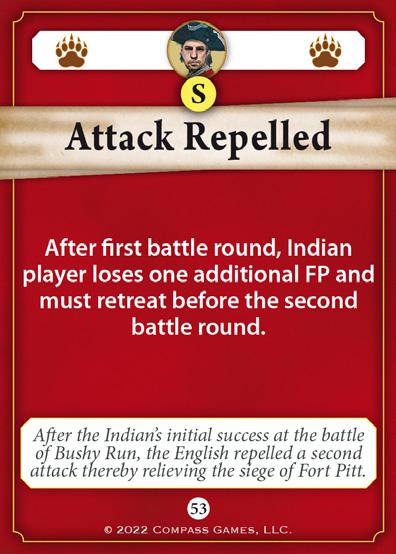
4. Place the green VP markers beside the Indian “0” VP Box.
5. Place the red VP markers beside the British “0” VP Box.
6. Ignore War Belts, Guinea Loans, Treaties and the Razed Forts Track.
Victory Points:
Each destroyed (not disrupted) FP, wounding a Sachem or British Officer and killing a Sachem earns 1 VP. Killing a British Officer earns 2 VP.
Fort Michilimackinac was the fifth fort to fall. It was in what is now Mackinaw City, Michigan. It was the largest fort taken and it was taken through subterfuge. On June 2, 1763, a Band of Ojibwas and Sauks beguiled the fort’s defenders with a staged game of stickball, an early form of lacrosse. As the soldiers watched, the ball was hit through the open gate. The teams followed the ball into the fort where native women provided them with hidden weapons. In the end, the warriors killed about 20 of the garrison defenders.
Duration: Summer - Fall 1763 (Two turns)
Set-up (Use A spaces) :
➢ Three Arms Points
➢ Three-card hands









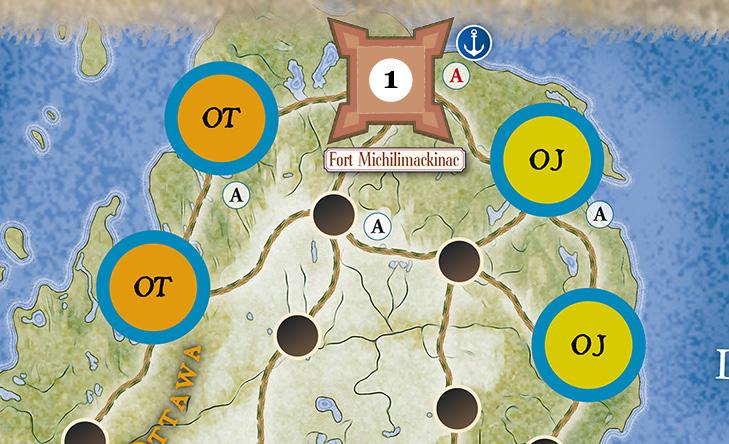
Indian Units:
Ottawa: 2 FP Warrior Bands, Sachem Breton
Ojibwa: 4 FP Warrior Bands, Sachem Minavavana
British Units: 1 FP Royal Americans, 1 Supply & Major Etherington
See illustration for positions.
Objectives:
➢ Nations Player: Raze Fort Michilimackinac
➢ British Player: Prevent the fall of the fort
Once the war had commenced, Fort Pitt became a colonial haven. Hundreds of colonists and their families streamed into the fort then commanded by Swiss-born Captain Simeon Ecuyer. The Delaware attacked the fort but found it too strongly defended, so it was kept under siege throughout July of 1763. At the same time Delaware and Shawnee warrior bands raided all across Western Pennsylvania. At the time, General Amherst conspired to spread disease to the natives by suggesting his officers offer contaminated blankets during their parlays. Since smallpox had broken out in Fort Pitt, Amherst’s counsel was heeded. The siege lifted when most of the Indian force left to meet Bouquet’s relieving army prior to the Battle of Bushy Run.
Duration: Summer - Fall 1763 (Two turns)
Set-up (All units are located in or on Fort Pitt):
➢ Three Arms Points
➢ Three-card hands

Indian Units:




Mingo: 2 FP Warrior Bands, Sachem Guyasuta
Ojibwa: 2 FP Warrior Bands, Sachem Minavavana.
Seneca: 2 FP Warrior Bands, Sachem Tahaiadoris
Shawnee: 2 FP Warrior Bands, Sachem Hokolesqua
2nd Turn Reinforcements:
Ottawa: 2 FP Warrior Bands are added to the siege.
British Units:
2 FP British Regulars, 2 FP Militia, 2 Supply & Captain Ecuyer
Place a British Off-Map Force counter on Fort Pitt and and the besieged force in the corresponding letter’s box on the British Off-Map Force sheet. Place a Siege marker on top of the British Force counter. Place an Indian Off-Map Force counter on top of the Siege marker and the besieging force in the corresponding symbol’s box on the Indian OffMap Force sheet.
British will suffer 1 step of attrition for every 3 steps present at the end of each turn they are besieged. If the besieging force falls below 8 FP the siege is lifted.
Objectives:
➢ Nations Player: Raze Fort Pitt.
➢ British Player: Prevent the fall of the fort.
Marching to the aid of Fort Pitt on August 5, 1763, Colonel Bouquet led a mixed force of 500 Black Watch and Royal Americans. A combined force of between 110-500 Delaware, Shawnee, Mingo, and Huron warriors ambushed Bouquet near Bushy Run Station. The Indians attacked the encamped British again the following day, but were in turn ambushed and routed following a Highland bayonet charge. At least 60 Indians were killed while the British sustained nearly 100 casualties. Still, the British were victorious and did manage to relieve Fort Pitt. Bouquet’s victory, the first in the war, was celebrated throughout the colonies.
Duration: Summer - Fall 1763 (Two turns)
Set-up (Use “C” Spaces):
➢ Three Arms Points
➢ Three-card hands

Indian Units:



Lenape: 2 FP Warrior Bands, Sachem Teedyuscung
Mingo: 2 FP Warrior Bands, Sachem Guyasuta
Ojibwa: 4 FP Warrior Bands, Sachem Minavavana
Seneca: 2 FP Warrior Bands, Sachem Tahaiadoris
British Units:
6 FP Black Watch, 2 FP of Royal Americans, 2 FP of Militia, 1 FP of Indian Allies, 1 Artillery, 2 Supply, Colonel Bouquet & Major Rogers
The Indians set up in the “C” space Fort Pitt. They are considered to have already moved on the first turn and so can’t attack. The British set up in the Bushy Run “C” space and must attack the Indian force which will attempt to ambush them. On the second turn the Nations Player must attack and the British will attempt their own ambush.
Objectives:
➢ Nations Player: Must cause more unit losses than the British cause to the Indians.
➢ British Player: Must cause more unit losses than the Indians cause to the British.
D Ambush
Fort Niagara, one of the largest western forts, was neither attacked nor besieged. The Fort’s pivotal Niagara Falls portage was attacked on September 14, 1763. Three hundred Senecas, Ottawas, and Ojibwas attacked a supply train. They then ambushed two companies from Fort Niagara sent to rescue the supplies. Over 100 soldiers and teamsters were killed while Indian losses were negligible. The engagement came to be known as the “Devil’s Hole Massacre”, the deadliest engagement for British soldiers during the war.
Duration: Summer - Fall 1763 (Two turns)
Set-up (Use “D” Spaces):
➢ Three Arms Points
➢ Three card hands

Indian Units:


Seneca: 8 FP Warrior Bands, & Sachem Honeywus
British Units:
2 FP British Regulars, 2 FP Militia, 4 Supply
2nd Turn Reinforcements:
6 FP British Regulars and Lieutenant Fraser enter Fort Niagara
The British force starts in the Portage space (Devil’s Hole). The Nations Player must attack this force. Whoever survives retreats to Fort Niagara. On the second turn, the British Reinforcements join the remains of the previous force and this combined force (along with all the remaining supply) must attack the Seneca Force in an attempt to control the space.
Objectives:
➢ Nations Player: Must destroy at least 3 British supply or control the Portage space at the end of the scenario.
➢ British Player: Must cause more than six steps damage to the Indians or control the Portage space at the end of the scenario.
➢ Any other result is a draw.
Note: The British Player may voluntarily sacrifice one or more Supply steps in lieu of losing combat FP but each Supply step lost in battle earns the Nations Player 1 VP.
In the summer of 1764, the British sent two expeditions against the united tribes, one under Colonel Bradstreet in the North and one under Colonel Bouquet in the South. Bradstreet relieved Fort Detroit and successfully reoccupied British outposts but he overstepped his authority in making treaties with various Nations. Colonel Bouquet set out late from Fort Pitt. He marched to the Muskingum River in the Ohio Country on October 3, 1764, with over 1000 men. Bearing down on native villages, he learned of the treaties struck at Fort Niagara and Fort Detroit. Native Americans in the Ohio territory were becoming isolated. Bouquet demanded a return of all captives. Guyasuta and other leaders reluctantly handed over more than 200 captives, many of whom had been adopted into Native families.
Duration: Summer, Fall & Winter 1764 - Spring 1765 (Four turns) Winter Effects: During Winter, British forces may return to the nearest unbesieged Fort (Forts can shelter 5x their fort value). British forces may stay in the field but suffer attrition – 1 step for every 3 steps


present. Attrition may be reduced by expending supply – each supply step negates the loss of 2 steps. Warbands and sachems must return to their respective villages. Each village will hold a maximum of four War Band units (healthy or disrupted) and any number of sachems.
Set-up (Use “E” Spaces):
➢ Five Arms Points
➢ Eight card hands
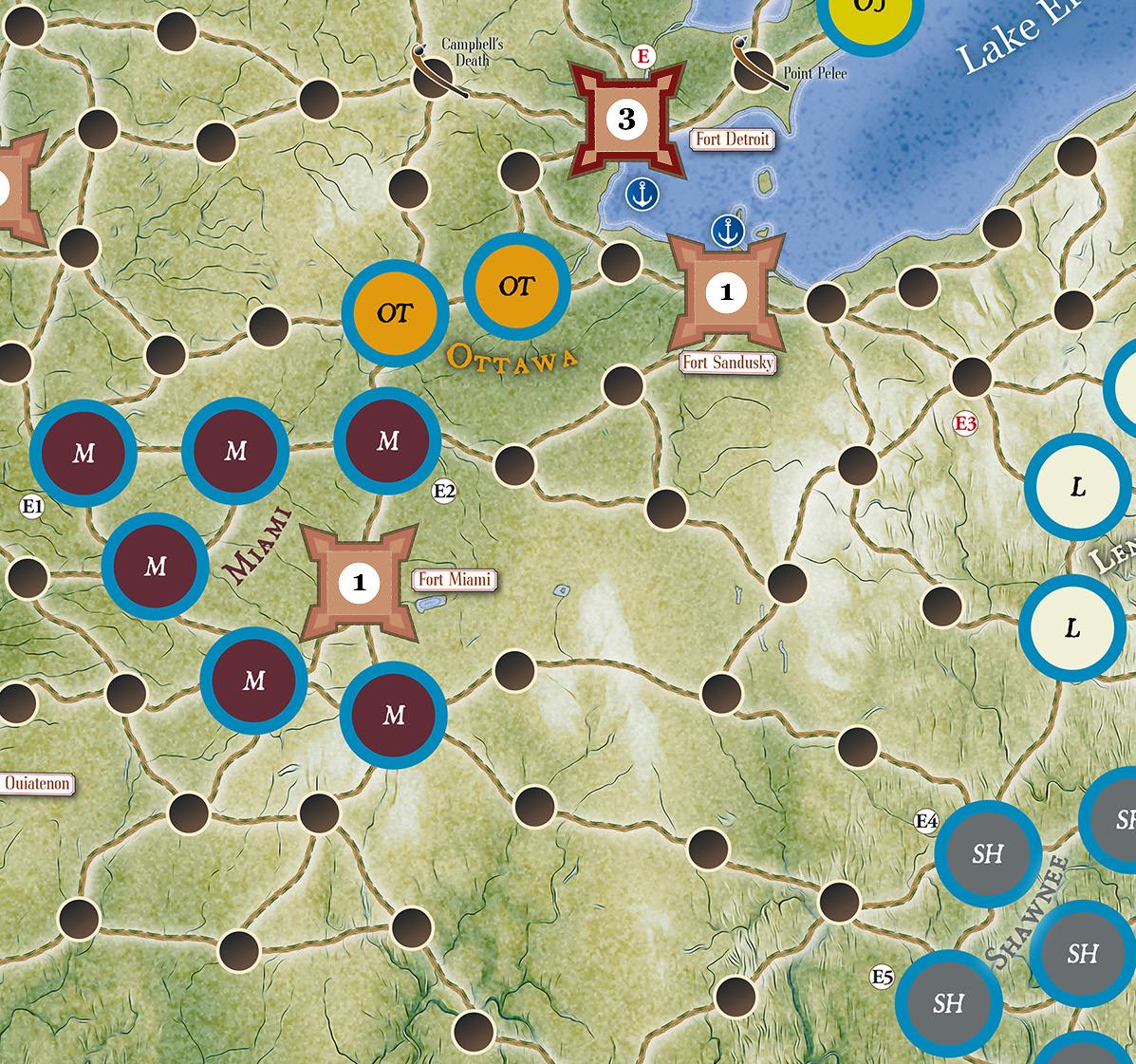


Indian Units:














Lenape: 2 FP Warrior Bands, Sachem Teedyuscung
Miami: 2 FP Warrior Bands, Sachem Michikiniqua
Mingo: 2 FP Warrior Bands, Sachem Guyasuta
Seneca: 2 FP Warrior Bands, Sachem Tahaiadoris
Shawnee: 6 FP Warrior Bands, 5 Captives, Sachem Hokolesqu
The Nations Player may distribute the Warrior Bands, Sachems and Captives in any combination as long as units occupy all five numbered “E” spaces.
British Units:
8 FP Black Watch, 4 FP Royal Americans, 2 FP British Regulars, 6 FP Militia, 1 Artillery, 2 FP Indian Allies, 2 Supply, Colonel Bouquet & Colonel Montgomery
Place the Off-Map Force “A” marker on Fort Detroit (the red “E” space). Place the British Units into the A box of the Off-Map Force Card. This force may later be divided into two or more forces. Place the Indian Allies in a space adjacent to Fort Detroit.
The Indians are assumed to have moved and so have no move/combat on the first turn. You are now playing with a standard eight card hand. Mulligan Cards may be used in this scenario. Set up Forts Detroit and Pitt. The Nations Player may not attack forts or settlements this scenario.
➢ Nations Player: Earn more VPs than British
➢ British Player: Earn more VPs than Indians
VP Awards:
➢ Unit loss: 1 VP for the removal of each FP from the board (Not for disruption!)
➢ British Officers: 1 VP for Wounding, 2 VP for removal (Wounded leaders may die during Winter; see 16.2).
➢ British leaders lost: 2 VP (Indian sachems and Replacement Officers earn 0 VPs).
➢ Captives: 1 VP to British for each freed. 2 VP to Indians for each controlled at the end of the scenario.
➢ Miami Villages: 2 VP to British for each Miami village destroyed. 1VP to Indians for each village still controlled at end of scenario.
21.1
➢ Shuffle the Indian and British decks.
➢ Deal Indian and British Players 8 cards each.
➢ Place the turn counter in the Spring Box of the appropriate year on the Turn Track.
➢ Place the Arms counter in the box indicated by the chosen scenario.
➢ Place the green VP markers on the space of the Indian VP Track and the red VP markers on the British VP Track as indicated by the chosen scenario.
➢ Place the Guinea markers indicated by the scenario in the Bank of England Box.
➢ Place a Razed fort marker on the Razed Fort track in the box indicated by the scenario.
➢ Place Razed Fort/Settlement/Village markers in the spaces on the map based on the scenario chosen.
➢ Set up starting units where indicated by the chosen scenario.
➢ Place Indian reinforcements in their nation boxes according to the chosen scenario.
➢ The Nations Player places the two War Belt Markers in one or two different nation boxes.
If using the Activation Chart optional rule (18.2), place the Activation Chart and the white, red, and black activation cubes near the Nations Player.
All historical scenarios use the VP rules set in 17.0, unless otherwise specified.

The abrupt end of the French and Indian War saw the British victorious but victory was complicated by the Seneca Holy Man, Neolin’s, preaching and Commanding General Amherst’s harsh trade policies. At the same time, an influential Ottawa sachem by the name of Pontiac ignited a general rising of the northwest Nations. Because the British disdained the Indian’s military ability, they were caught completely unprepared for the Indian onslaught. Within a few short months, all the British forts in the west had fallen except for Fort Detroit and Fort Pitt, which were both besieged. Colonial settlements were raided at will while colonists and their families streamed into the remaining forts or headed east to safety.
Set-up:
Place chits equaling 10 Guineas in the British Bank of England Box. Place the Indian VP markers in the 0 VP box on the VP Track. Place British have 15 VP at start. Place the Arms Marker in the 5 space on the Indian Arms Track. Place the Razed Fort Objective Marker besides the Razed Fort Track (there are no forts razed at start).
Indian Units:
In the nation’s village Spaces, no more than 4 FP per village:
➢ Ottawa: 10 FP of Warrior Bands, Sachems Pontiac, Breton & Egushawa. Up to 4 FP and Pontiac are placed adjacent to Fort Detroit.
➢ Seneca: 10 FP of Warrior Bands, Sachems Shingas & Teedyuscung Up to 2 FP and Kiasutha may be placed in a space adjacent to Fort Detroit.
➢ Lenape: 9 FP of Warrior Bands, Sachems Neolin, Shingas & Teedyuscung. Up to 4 FP and one Sachem may be placed adjacent to Fort Detroit. Neolin must be placed in any Lenape village.
➢ Ojibwa: 8 FP of Warrior Bands, Sachems Minavavana & Wasson Up to 4 FP and Wasson may be placed adjacent to Fort Detroit.
➢ Mingo: 6 FP of Warrior Bands, Sachem Guyasuta. Up to 2 FP and Guyasuta may be placed adjacent to Fort Detroit.
➢ Mississasauga: 5 FP of Warrior Bands, Sachems Sekahos
➢ Miami: 3 FP of Warrior Bands, Sachems Cold Foot & Michikiniqua. Up to 2 FP and one Sachem may be placed adjacent to Fort Detroit.
➢ Shawnee: 3 FP of Warrior Bands, Sachems Hokolesqua & Kaské
➢ Huron: 2 FP of Warrior Bands, Sachem Big Jaw
➢ Menominee: 2 FP of Warrior Bands, Sachem Oshkosh
➢ Kickapoo: 1 FP of Warrior Bands, Sachem Le Loup
➢ Mascouten: 1 FP of Warrior Bands, Sachem Manso
➢ Piankeshaw : 1 FP of Warrior Bands, Sachem Grelot
➢ Potawatomie: 1 FP of Warrior Bands, Sachem Washee
➢ Wea: 1 FP of Warrior Bands, Sachem Wapamanqua Place remaining Indian units in their respective Indian Reinforcement Boxes.
British Units:
➢ Forts Edward Augusta, Joseph, Miami, Oiatenon & Michilimackinac: 1 FP of Royal Americans each.
➢ Fort Michilimackinac: Major Etherington
➢ Forts Allen, Le Boeuf Sandusky & Venango: 1 FP of British Regulars each.
➢ Forts Bedford, Cumberland & Presque Isle: 2 FP of Royal Americans each.
➢ Fort Augusta: 1 FP of British Regulars, 1 FP Militia, Major Rogers
➢ Fort Ligonier: 2 FP of British Regulars, 1 FP Militia.
➢ Fort Dinwiddie: 1 FP of Militia.
➢ Fort Detroit: 2 FP of Royal Americans, 1 FP Militia, 1 Artillery, 1 Supply, Schooners Huron & Michigan, Major Gladwin, Captain Campbell, Captain Dalyell
➢ Fort Pitt: 2 FP of British Regulars, 1 FP of American Militia, 1 Artillery, 1 Supply, Colonel Bouquet & Captain Ecuyer
➢ Fort Niagara: 6 FP Black Watch, 2 FP of Royal Americans, 2 FP Militia, 1 Artillery, 2 Supply, Sir Johnson & Major Wilkins
➢ One space adjacent to Fort Niagara: 2 FP of Indian Allies
➢ Philadelphia: 4 FP of British Regulars, 4 FP Black Watch, 2 FP Royal Americans, 1 Artillery, 4 Supply, Colonel Bradstreet
➢ Nations Player: Earn more VP than British Player.
➢ British Player: Earn more VP than Nations Player.
Automatic Victories:
➢ The Nations Player: Forts Pitt AND Fort Detroit are razed.
➢ The British Player: If Indians fail to raze more than 9 forts.
The British Board of Trade held General Amherst, solely responsible for the New World disaster. He was recalled and replaced by Major General Thomas Gage. Gage dispatched two expeditions to end the rebellion and retrieve British prisoners. But his plan was actually Amherst’s plan, which prolonged instead of shortened the war because it focused on punishing Indians. Gage did allow Sir William Johnson to conduct peace negotiations at Niagara while Colonel Bradstreet conducted unauthorized treaties, leaving Colonel Bouquet without the support in the south which he expected.
Set-up:
Marker Placement: Place chits equaling 30 Guineas in the British Bank of England Box. Place the Indian VP marker in the 10 VP box on the VP Track. Place the British VP marker in the 0 VP box on the VP Track.
Place the Arms Marker in the 8 space on the Indian Arms Track. Place the Razed Fort Objective Marker on the 11 Space on the Razed Fort Track. Players each receive an eight-card hand.
Place Treaty markers in the Huron, Mississauga and Seneca spaces on the Indian Reinforcements Track.
Place Razed Village markers on all of Huron, Mississauga and Seneca village spaces.
Place Razed Fort markers each on Forts Edward Augusta, Joseph, Miami, Oiatenon, Michilimackinac, Sandusky, Venango, Le Boeuf, Presque Isle, Ligonier & Dinwiddie.
Place 10 Razed Settlement markers without location restriction: 3 on the Pennsylvania Settlements, 3 on the Virginia Settlements, all of the Jackson River & Green River Settlements.



Indian Units:
➢ In any village(s) within 10 spaces west of Fort Pitt: 1 FP Huron, 1 FP Mississauga, 4 FP Seneca & Seneca Sachem Kiasutha These units may remain on the map despite their nation’s treaties. If disrupted they may be restored but if removed they may not return on the map.
In the nation’s village Spaces, no more than 4 FP per village:
➢ Ottawa: 10 FP of Warrior Bands, Sachems Pontiac, Breton & Egushawa, 3 Captives. Pontiac must be placed in an Ottawa village south of Fort Detroit.
➢ Ojibwa: 8 FP of Warrior Bands, Sachems Minavavana & Wasson, 3 Captives.
➢ Shawnee: 8 FP of Warrior Bands, Sachems Hokolesqua & Kaské, 3 Captives.
➢ Lenape: 6 FP of Warrior Bands, Sachems Teedyuscung & Shingas, 3 Captives. Neolin is not placed on the map (At this point he has rejected the uprising and called on his nation to reject it as well).
➢ Miami: 5 FP of Warrior Bands, Sachems Cold Foot & Michikiniqua, 3 Captives.
➢ Mingo: 4 FP of Warrior Bands, Sachem Guyasuta, 2 Captives.
➢ Menominee: 4 FP of Warrior Bands, Sachem Oshkosh, 1 Captive.
➢ Kickapoo: 2 FP of Warrior Bands, Sachem Le Loup
➢ Mascouten: 2 FP of Warrior Bands, Sachem Manso
➢ Piankeshaw : 2 FP of Warrior Bands, Sachem Grelot
➢ Potawatomie: 2 FP of Warrior Bands, Sachem Washee
➢ Wea: 2 FP of Warrior Bands, Sachem Wapamanqua
Place remaining Indian units in their respective Indian Reinforcements Boxes.
British Units:
➢ Fort Detroit: 2 FP Black Watch, 4 FP Royal Americans, 6 FP Militia, 2 FP French Militia, 1 Artillery, 2 Supply, Schooner Boston & Sloop Beaver, Major Gladwin & Major Rogers
➢ Fort Niagara: 5 FP Black Watch, 5 FP Royal Americans, 4 FP British Regulars, 4 FP Militia, 2 Artillery, 3 Supply, Sir Johnson, Major Wilkins, Colonel Bradstreet
➢ One space adjacent to Fort Niagara: 4 FP of Indian Allies
➢ Fort Pitt: 4 FP Black Watch, 4 FP Royal Americans, 2 FP Militia, 2 Artillery, 3 Supply, Colonel Bouquet, Colonel Montgomery & Captain Ecuyer
➢ One space adjacent to Fort Niagara: 1 FP Indian Allies
➢ Fort Cumberland: 2 FP British Regulars, 1 FP Royal Americans, 3 FP Militia
➢ One space adjacent to Fort Cumberland: 1 FP Indian Allies
➢ Fort Bedford: 1 FP Royal Americans, 2 FP Regulars, 2 FP American Militia
➢ Fort Augusta: 3 FP British Regulars, 1 FP Militia
➢ In Fort Allen place 1 FP British Regulars, 1 FP Militia
➢ In Philadelphia Place 6 FP of British Regulars, 2 FP Royal Americans, 1 Artillery, & 4 Supply, General Gage
Place the remaining British units into the British Force Pool.
Nations Player earns 1 VP for every 5 Guineas of British War Debt, rounded up.
Objectives:
➢ Nations Player: Earn more VP than the British Player.
➢ British Player: Earn more VP than the Nations Player.
Automatic Victories:
➢ Nations Player: Either Fort Pitt OR Fort Detroit are razed.
➢ British Player: Fort de Chartres becomes British controlled.
Major military clashes essentially ended with the 1764 expeditions although Native Americans continued to resist in the Illinois Country. The British had not yet taken possession of Fort de Chartres. Pontiac’s influence was in decline. Charlot Kaské, a Shawnee war chief arose as the most important leader of the Indian resistance. Kaské even traveled to New Orleans to enlist the French in his bid to continue the fight. By 1765, the British decided to rely on diplomacy to end the conflict. Gage sent a wampum belt To Pontiac suggesting a general peace. He also arranged for Johnson’s deputy, the opportunistic George Croghan, to journey into Illinois country in the summer of 1765. His Band was attacked and he was captured by Kickapoo and Mascouten but still he managed to meet and negotiate with Pontiac. A formal treaty with Pontiac and Sir Johnson was signed at Fort Ontario on July 25, 1766. This was not a surrender. No lands were ceded. No prisoners returned. No hostages were taken. No leaders were punished. Out of disgust, Kaské crossed the Mississippi River to escape British influence while Pontiac was assassinated by a Peoria warrior in 1769 near the French settlement of Cahokia in Illinois Territory.
Set-up:
Marker Placement: Place chits equaling 50 Guineas in the British Bank of England Box. on the VP Track. Place the Indian VP marker in the 10 VP box on the VP Track. Place the British VP marker in the 10 VP box Place the Arms Marker in the 6 space on the Indian Arms Track. Place the Razed Fort Objective Marker on the 11 Space on the Razed Fort Track. Players each receive an eight-card hand.
Place Treaty markers in the Huron, Mississauga Miami, Shawnee and Seneca spaces on the Indian Reinforcements Track.
Place Razed Village markers on 4 Ojibwa and 4 Ottawa villages closest to British forts. Remove all of their remaining units from the game. Place Razed Village markers on any four Ojibwa and any four Ottawa villages.
Place Razed Fort markers each on Forts Augusta, Dinwiddie, Edward, Joseph, Le Boeuf, Ligonier, Miami, Michilimackinac, Ouiatenon, Presque Isle, Sandusky and Venango.
Place 10 Razed Settlement markers without location restriction: 3 on the Pennsylvania Settlements, 3 on the Virginia Settlements, all of the Jackson River & Green River Settlements..
Indian Units:
➢ Ottawa: 4 FP Warrior Bands, Sachem Pontiac in any Miami villages.
➢ Ojibwa: 4 FP Warrior Bands, Sachem Minivavana in any Miami

villages.
➢ Lenape: 3 FP Warrior Bands, Sachem Shingas in any Shawnee village.
In the nation’s village Spaces, no more than 4 FP per village:
➢ Menominee: 3 FP Warrior Bands, Sachem Oshkosh
➢ Kickapoo: 3 FP of Warrior Bands, Sachem Le Loup
➢ Mascouten: 3 FP of Warrior Bands, Sachem Manso
➢ Piankeshaw : 3 FP of Warrior Bands, Sachem Grelot
➢ Potawatomie: 3 FP of Warrior Bands, Sachem Washee
➢ Wea: 2 FP of Warrior Bands, Sachem Wapamanqua
These units may remain on the map despite their Nation’s Treaties. If disrupted they may be restored but if removed, they may not return to the map. Place the following units in any nation’s villages, maximum four per village. These units may remain on the map despite their nation’s Treaties. If disrupted they may be restored but if removed, they may not return to the map.
➢ Miami: 7 FP Warrior Bands, Sachems Cold Foot & Michikiniqua
➢ Shawnee: 8 FP Warrior Bands, Sachems Hokolesqua & Kaské
Place remaining Indian units in their respective Indian Reinforcements Boxes.
British Units:
➢ Fort Detroit: 4 FP Royal Americans, 4 FP Black Watch, 6 FP Militia, 1 FP French Militia, 1 Artillery, 2 Supply, Schooner Boston & Sloop Beaver, Major Gladwin, Major Rogers & Captain Dalyell
➢ Fort Niagara: 3 FP Black Watch, 5 FP Royal Americans, 4 FP British Regulars, 2 FP Militia, 2 Artillery, 3 Supply, Sir Johnson, Major Wilkins, Colonel Bradstreet
➢ One space adjacent to Fort Niagara: 4 FP Indian Allies
➢ In Fort Pitt place 4 FP of Black Watch, 6 FP of Royal Americans, 1 FP Regular, 4 FP Militia, 2 Artillery, 3 Supply, Colonel Bouquet, Colonel Montgomery, Captain Ecuyer
➢ One space adjacent to Fort Pitt: 1 FP Indian Allies
➢ Fort Cumberland: 2 FP Royal Americans, 2 FP British Regulars, 1 FP Militia
➢ Fort Bedford: 2 FP Royal Americans, 2 FP Militia
➢ Fort Augusta: 3 FP British Regulars, 1 FP Militia
➢ Fort Allen: 1 FP British Regulars, 2 FP Militia
➢ Philadelphia: 6 FP British Regulars, 1 Artillery, 2 Supply, General Gage Place the remaining British units in the British Force Pool.
Special Rule: The Nations Player earns 1 VP for every 3 Guineas of British War Debt, rounded up.
Objectives:
➢ Nations Player: Earn more VP than the British Player.
➢ British Player: Earn more VP than the Nations Player.
Automatic Victories:
➢ Nations Player: Forts Pitt AND Fort Detroit are razed and Pontiac is still in play.
➢ British Player: At least 10 treaties are made as long as Fort de Chartres is British controlled.
Begin the scenario using the 1763 Scenario set-up. Each new year, the forces already on the map after winter attrition carry over into the next year along with the guinea debt and the existing Arms Points and fort destruction level. Follow Special rules and Automatic Victory conditions for each year but ignore the automatic placement of razed villages, settlements, forts, and treaties unless players actually achieve these goals while playing. VPs are reset based on the points differential. Example: At the end of the year 1763 the Indians are winning with 29 VPs to the British 21 VPs. The difference is 8 VPs in the Nations Player’s favor, so in 1764, the Indians begin the year with 8VPs and the British begin with 0 VPs. At the end of 1764, the Indians are winning with 22 points to the British 20 points. So, in 1765 the Nations Player begins with 2 Victory points and the British Player begins with 0 VPs.
➢ Amherst’s Draw-Down: Place the remaining British units into the British Force Pool.In the fall of 1763 General Amherst ordered a draw-down of troops in the west. This is indicated in the game by having the British Player remove 10 FP to the British Force Pool during the British Reinforcement Phase in the Fall of the 1763 turn. 8 steps must be taken from Regular, Royal American or Black Watch units. This removal is indicated on the Turn Track.
• OH NO cards whose text is used during the game remain in play. OH NO! cards held in a player’s hand at the end of the year count as negative points and are removed from play at the end of the year.
• Razing Villages: Unlike the one-year scenarios, the British Player gets no VP for razing a single village. Instead, he only gains VPs when all the villages of a nation are destroyed. The British Player receives VPs equal to the number of villages destroyed and places a Treaty marker on the Indian Reinforcements Track to show that the nation is no longer allied with Pontiac.
• Nations Player earns 1 VP for every 3 Guineas of British War Debt, rounded up.
Objectives:
➢ Nations Player: Earn more VP than the British Player.
➢ British Player: Earn more VP than the Nations Player.
Automatic Victories 1763:
➢ The Nations Player: Forts Pitt AND Fort Detroit are razed.
➢ The British Player: If Indians fail to raze more than 12 forts.
Automatic Victories 1764
➢ Nations Player: Either Fort Pitt OR Fort Detroit are razed.
➢ British Player: Fort de Chartres becomes British controlled and no 2-3 value fort is under siege.
Automatic Victories 1765
➢ Nations Player: Forts Pitt AND Fort Detroit are razed and Pontiac is still in play.
➢ British Player: At least 10 treaties are made as long as Fort de Chartres is British controlled.



Point Pelee (28 May 1763):
Lieutenant Abraham Cuyler, commanding a supply convoy made camp at Point Pelee enroute to Detroit. Unaware of the ongoing siege of Fort Detroit, Cuyler was ambushed and defeated by a force twice his size. Two thirds of his men were slaughtered or captured and tortured. The bodies were tossed in the river which flowed past Fort Detroit to demoralize its defenders.
Campbell’s Death (July 4, 1763):
Captain Donald Campbell was a well-liked British officer in the Royal American Regiment. He was held in high esteem by the French and the local Indians. He was invited to parlay with rebellious Indian sachems by an influential French trader. Soon after arriving he and fellow officer Lt. John McDougall were taken captive. Contrary to Pontiac’s wishes, both officers were poorly treated. McDougall escaped, but Campbell was killed, mutilated, and cannibalized by an Ojibwa Sachem who had lost his brother to the British.
Bloody Run (July 31, 1763):
The British under Captain James Dalyell attempted to break Pontiac’s siege of Fort Detroit. The notable ranger, Robert Rogers participated in the attack. Pontiac was alerted to the supposed surprise attack. He defeated but did not destroy the British force. Dalyell was killed in the battle. Following the defeat, General Amherst offered a £200 bounty to anyone who would kill Pontiac.
Devil’s Hole (September 14, 1763):
The Niagara Portage was particularly important to Fort Niagara. Here a wagon convoy near the gorge known as “Devil’s Hole” was attacked and destroyed by a Seneca warrior band. Two companies of the 80th Regiment of Foot rushed to assist but were ambushed and nearly wiped out. Over 80 soldiers lost their lives.
Conestoga Massacre (December of 1763):
A vigilante group of Scots-Irish settlers known as the Paxton Boys led by the fiery preacher, John Elder, murdered 20 peaceful Susquehannock Indians over the course of several events that came to be known as the Conestoga Massacre. In January 1764, 250 Paxton Boys marched on Philadelphia to demand action from the legislature to protect their homes. They dispersed only after Benjamin Franklin assured them consideration would be taken.
Black Boys (March 6, 1765):
Frontiersmen dissatisfied with the outcome of Pontiac’s War took to raiding Supply trains heading for western forts. Known as Black Boys, they earned their sobriquet by blackening their faces the way some Indians did and dressing like Indians. The first incident was a raid on a convoy financed by George Croghan headed for Fort Pitt. Labeled diplomatic presents, the Indian trader was illegally including rum and gunpowder in his shipments. Numerous raids followed. Later incidents led to a direct confrontation with British soldiers where shots were fired and in one case a British Officer was kidnapped. On September 12, 1769 the Black Boys even surprised and captured Fort Bedford. The Black Boys were also known as Brave Fellows and Loyal Volunteers.
Bushy Run (August 5–6, 1763):
Henry Bouquet led a relief column of 500 British soldiers, including
Royal Americans and Black Watch to relieve besieged Fort Pitt. The besieging Indians were forewarned and ambushed the British column one mile east of Bushy Run Station. The British managed to hold their ground until after sunset. On the following day The British ambushed the Indian force attempting to attack them. After the Indian withdrawal, Bouquet continued his march and relieved Fort Pitt. Despite the 84 casualties he sustained, it was a turning point in the war.
My Interest in Indian culture and Indian Wars goes back to high school and my reading of Dee Brown’s, Bury My Heart at Wounded Knee and how her history radically differed from the John Wayne movies and U.S. History that previously shaped my opinion of Native Americans. Later, college courses in the American West confirmed what Dee Brown taught me.
I experimented in American Indian wars. One of my first designs in 2010, King Philip’s War (MMP), happened to be a brief but bloody conflict that engulfed New England in 1675-1676. I had the pleasure of working with Adam Starkweather as its developer. The design stirred up a public opinion hornet’s nest. Folks accused me of denigrating Indian culture when in fact I was trying to right a wrong by bringing buried history to light. The debate for and against the game raged across the internet, across the country, and ultimately, across the world – I kid you not!
It took years before my next attempt at simulating an Indian War. This time Blood on the Ohio (Compass Games) in 2018 drew much less contention and was relatively well received. This was Little Turtle’s loose confederation defending the Ohio territory from the flood of American settlers in the wake of the American Revolution, 1789-1794. This title grew out of a happenstance stay at a hotel on the fringe of the Fallen Timbers Battlefield. I began researching Pontiac’s War while waiting for Blood on the Ohio to go to the printers.
My inspiration for Pontiac’s War was David Dixon’s wonderful history, Never Come to Peace Again. His work reads like a novel in much the way Allan Eckert’s novels read like history. These works led me to David Silverman’s Thundersticks, a fascinating reflection on how European firearms changed the culture and balance of Native American power. It also introduced me to a dark slave-trading segment of Indian culture encouraged by European gunrunners. I was fortunate enough to meet Dr. Silverman while attending Mount Vernon’s Teacher Institute in the summer of 2018.
Blood on the Ohio and Pontiac’s War have both been built upon the foundation of my seminal work, King Philip’s War. In this latest design I focused on the British financial aspect, the intricacy of fort sieges, the inclusion of European captives and the four-way power struggle between the defeated French, the arrogant British, avaricious fur traders and the fanatical resistance of multiple Indian Nations to European encroachment and attempted domination.
My first step in the journey involved gathering maps of a much larger region than that covered by Blood on the Ohio, and because this new design presaged it, new territorial boundaries and national proportions
for Pontiac’s confederation. Ultimately the best map I found provided the terrain from Virginia to Illinois and encompassed all of the Great Lakes and possessed an overlay of the current Nations. Have to tell you; I did a dance when I found it. It was perfect.
My next challenge was the determination of Indian national location and the proportional number of villages involved. I use the word “Indian” instead of the more PC term “Native American” because Dr. Silverman informed me that Indian is the more accepted term among … Indians. I use the term “nation” as opposed to “tribe” as it too, is the more accepted term. I decided on representing 15 Nations although more were involved. Forgive me if I have misrepresented the location or the relative power of a particular nation. It was not easy to determine. Only late in the design development did I learn that the Shawnee and the Lenape (better known today as the Delaware) were particularly skilled in the use of rifles
A very late arrival to the design was the introduction of captives and captive exchanges. Yet, captives were possibly the most important aspect of the design. European captives were an integral aspect of the conflict. Their abduction and their use in negotiations were essential and I almost left them out. As it stands, they lend more flavor than any other aspect I can think of.
Before signing off, I have to pay tribute to Bill Morgal, a fan who has turned into a friend and ultimately, a valued artist and collaborator. I was heartened to find that he was not only willing but excited to work on the project. I hope that you enjoy the game. If it makes sense – it’s thanks to Bill. I also want to give special thanks to Knut Grünitz who began as our artist but turned into an exacting developer. I am so glad that he had the patience and willingness to work with me. He saw so many things I did not and helped me create a much more solid and comprehensive game design. And as always thanks to all the playtesters who had enough interest to take it for a spin.
Finally, I hope this design has taught you something and encourages you to dig deeper into Native American history. There is so much to learn and so much we need to know to better understand our nation and the people who lived here before us.

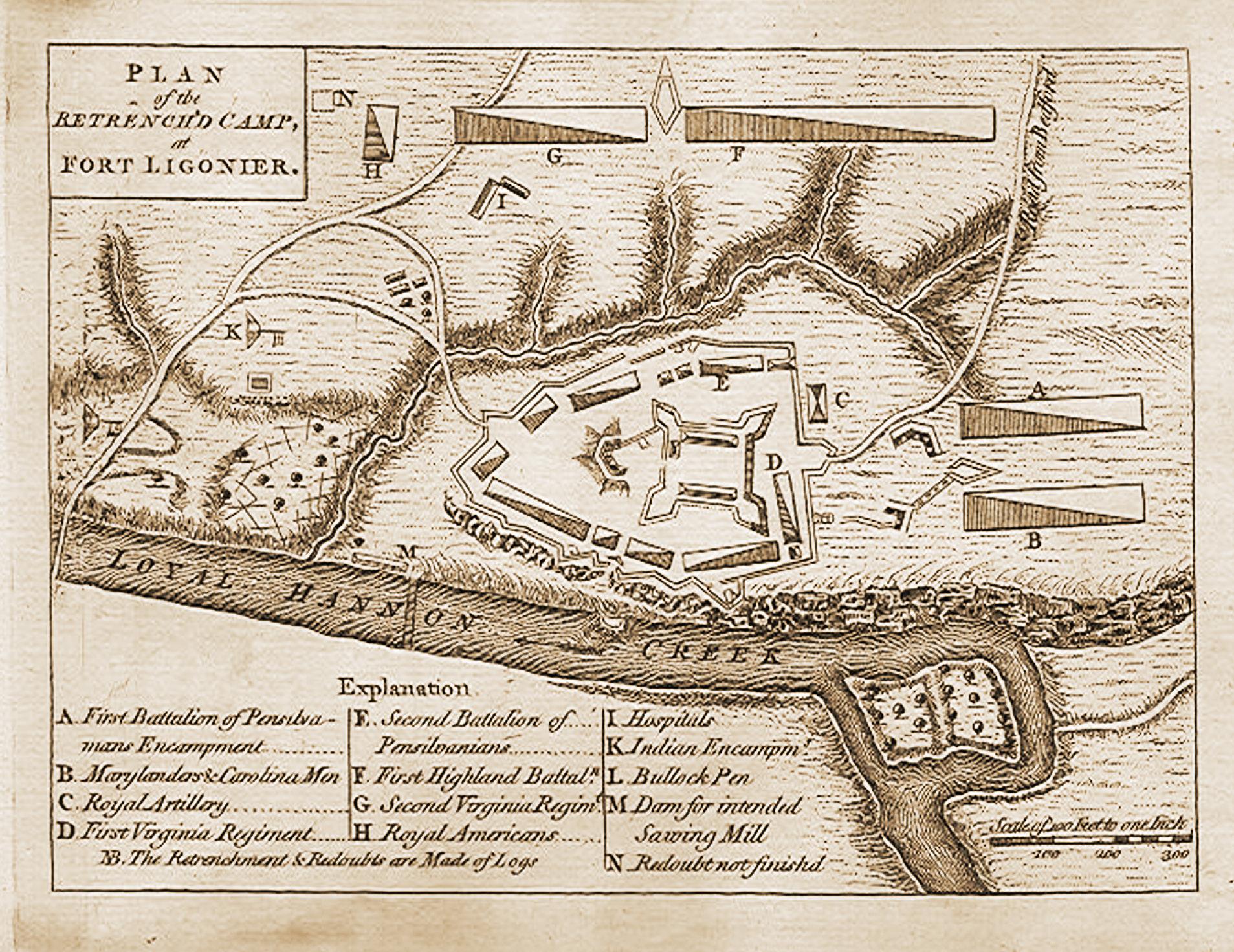



Full Campaign - Initial Set-up:
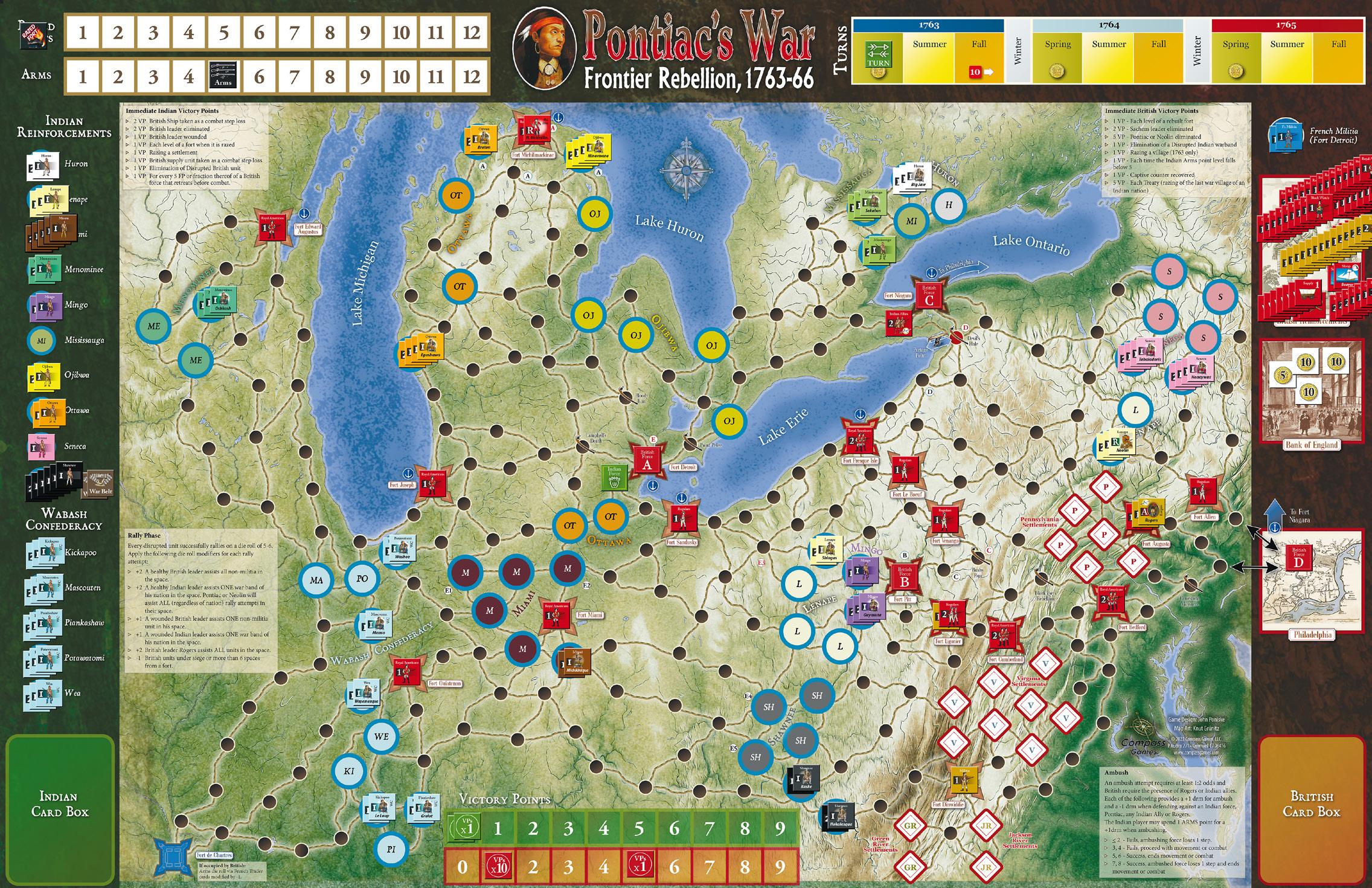
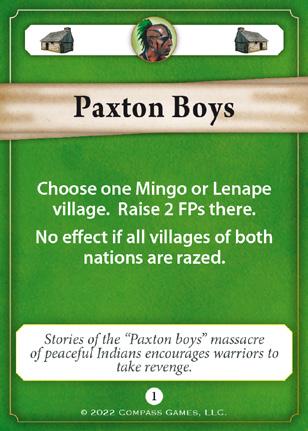
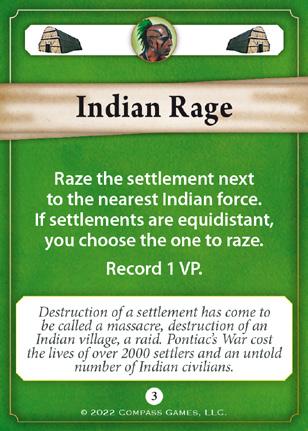
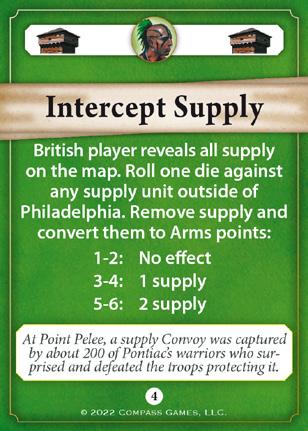
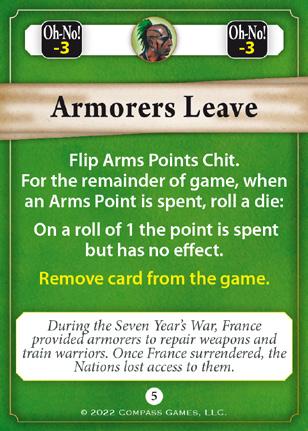

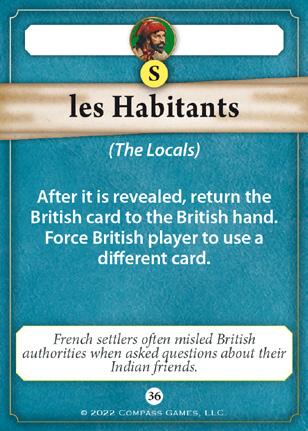


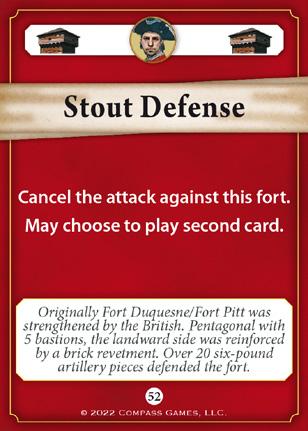



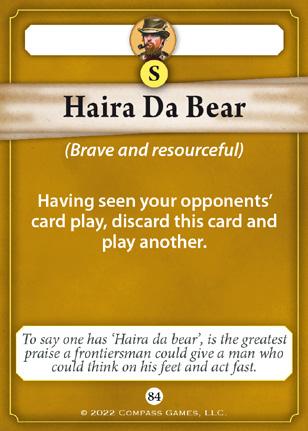

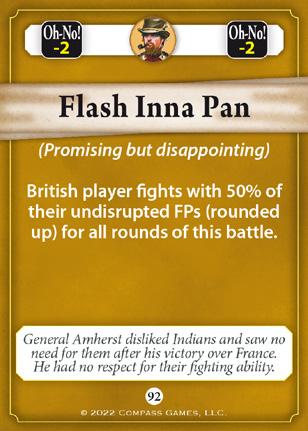
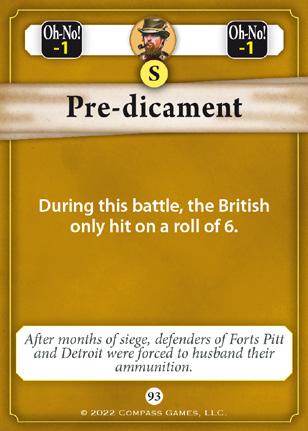

Indian Reinforcements:
Key Leaders: Pontiac may add one Warband FP from any nation who accompanies him. So 1 Ottawa FP joins his force. Neolin may draw one Warrior Band FP from the nearest Nation’s village to the space he occupies. So the Nations Player places 1 FP of Lenape with Neolin.

roll. The Colonial Volunteers section found on Page 8 of the rulebook is consulted to find that 1 FP of Militia may be added to any settlement space. Seeing a build-up of Shawnee, the British Player elects to place his Militia in a Green River Settlement.


War Belts: During set-up the Nations Player places both War Belts next to the Shawnee on the Indian Reinforcement Column. One die is rolled for each War Belt resulting in a 4 and a 5. Since the Nations Player has fewer VPs than the British, one is subtracted from each roll. This reduces the die rolls to 3 and 4. Checking the Warbelt Reinforcement Schedule on Page 7 of the rulebook we see that the roll allows placement of a total placement of 2 FP of Shawnee in one or more Shawnee villages. The Nations Player places them beneath Hokolesqua.
British Reinforcements:
Militia Volunteers: The British Player rolls one die resulting in a 1. If the British Player is behind in points, one is added to the die roll. At present the British are ahead so nothing is added to the die
Spring Guinea Loans: Since it is Spring, the British Player may borrow money to pay up to 25 Guineas for additional troops at the cost of 1 Guinea per FP or supply. The British Player elects to spend the maximum amount. He purchases 8 FP of Black Watch, 8 FP of Royal Americans, 2 FP of British Regulars, 1 FP of artillery and 4 Supply. Because Leader Johnson is in Fort Niagara he hires also 2 FP of Indian Allies. He places all these reinforcements in the Summer space on the Turn Track. Finally, he adds 25 Guineas to the bank of England. Reminder: at the end of the game the total number of Guineas will be subtracted from the British Player’s score.






The Indians will never see a more one-sided combat opportunity then they do in the Spring of 1763. They must make the best of it. Indian movement is ten spaces, two more than the British, so they can make a lot happen quickly, depending on the cards and the fateful dice rolls. The order of movement and battle is up to the Attacker. Remember that forces that enter through more than one adjacent space are considered separate attacks. Unless otherwise stated, British units are considered outside the forts, so that when the Indians attack, the British “fort up” (retreat beneath the fort). In no case here would the British attempt a two-round battle outside the fort. Each battle begins with players playing a card and declaring it a mulligan or text play. An Arms point must be committed for each attacking force to hit on a 5 or 6, or else the Nations player’s dice hit only on a 6 during combat.
The 5 Ojibwa SPs move to pick up the 3 Ottawa SPs and attack Fort Michimilimackinac from the same space.
Defender Ambush – No ambush possible.
Defender Retreat - Defender moves into fort.
Cards - Indian card is played - #17 Supply Shortage (Fort). Major Etherington may not use his reroll ability for this combat. - British card #85 Interferin’ (Village) is simply discarded. This attack is against a fort, not a village, and since the British are ahead in VPs,

they may not use the mulligan to add 1 FP to the battle.
Indian Arms Point – One Arms Point is committed and subtracted from the Arms Track. Arms points now stand at 4.
1st Round of Combat – Retreat into a fort causes a siege. Since the Indian force contains the minimum of 4 FP against a 1-value Fort, place a siege counter. This is considered the first round of combat. 2nd Round of Combat:
Please Note: For the sake of brevity, the 2nd round of combat in the following examples is abbreviated, beginning with Step 7 of the Combat Sequence. Players will begin the 2nd round of combat (or 3rd, as the case may be) beginning at Step 3 of 11.1. Refer to 11.11 for variations on this sequence found in different types of combat, including the fort retreat seen here.
➢ Artillery: No artillery present.
➢ Force Points: 8 Indian FP vs. 1 British FP.
➢ Simultaneous Dice Roll: The Nations Player rolls 8 dice resulting in 1, 2, 3, 5, 5, 5, 6 and 6 or five hits, discounting one hit due to the 1-value Fort.
The British Player rolls 1 die resulting in a 4, no hits.
➢ Remove Casualties: The British Player flips the 1 FP Royal American, then removes the counter to his Reinforcement box to account for the second hit. Major Etherington is KIA

by another 2 hits. There are no longer any defenders left. The fort is razed.
• Remove the siege counter.
• Replace the fort counter with a razed fort counter.
• The Nations Player receives 1 VP for razing a 1 FP fort.
• The Nations Player receives 2 VP for killing one British Officer.
• The Nations Player receives 1 VP for the loss of 1 British FP.
• The Nations Player receives 1 Arms point for razing a 1 FP fort. The Arms Points now again stand at 5.
• Roll a die. On a roll of 3-6 captives may be captured. A die result of “5” adds one captive to the Indian force.
• Move the Razed Fort Marker to the first box on the Razed Fort Track.
Retreat Option – N/A
Current Points – British 15 VPs, Indians 4 VPs , 1 razed fort, 1 captives and a 35 Guinea British loan
2 Fort Edward Augustus:
All Menominee SPs move and attack Fort Edward Augustus.
Defender Ambush – No ambush possible.
Defender Retreat – Defender moves into fort.
Cards - The Indian card is played for the text - #39 Coureurs de Bois (Anywhere). A die is rolled resulting in a “6.” Three Arms Points are added to the Indian Arms TRACK for a total of 8 Arms Points. The British card is played for the text - #60 Temporary Truce (Anywhere), allowing the #92 OH NO! Flash inna Pan card to be discarded.
Indian Arms Point – One Arms Point is committed and subtracted from the Arms Track. Arms points now stand at 7.
1st Round of Combat – The Indian Force lacks the four FP necessary to conduct a siege against a 1-value fort. This is considered the first round of combat.
2nd Round of Combat:
➢ Artillery: No artillery present.
➢ Force Points: 3 Indian FP vs. 1 British FP.
➢ Simultaneous Dice Roll: The Nations Player rolls 3 dice resulting in 4, 5 and 5, discounting one hit due to the 1-value Fort results in one hit.
The British Player rolls 1 die resulting in a 5 or one hit.
➢ Remove Casualties : The Nations Player flips one of the Menominee warrior bands to its disrupted side. The British Player flips his 1 FP Royal Americans to its disrupted side.
➢ Captives: No captives are possible.
Indian Retreat – Since the British still are in the fort the Nations Player lacks the 4 FP necessary to conduct a siege against a 1-value Fort, so no Siege markern is placed. The Indian force can’t stay and has to retreat into an adjacent space.
Current Points – British 15 VPs, Indians 4 VPs, 1 razed fort, 1 captives and a 35 Guinea British loan
Another Ottawa contingent moves and attacks Fort Joseph. Defender Ambush – No ambush possible.
Defender Retreat – Defender moves into fort.
Cards - Indian card is played for the text - #1 l’ingérence (Settlement). Since the attack is against a Fort not a settlement the card must be used as a mulligan. The Nations Player is currently behind in VPs so may use the card to add 1 FP to either of the two battle rounds. - British card is played for the text - #84 Haira Da Bear (Anywhere), This allows the British Player to play an additional card, but he declines to do so.
Indian Arms Point – One Arms Point is committed and subtracted from the Arms Track. Arms points now stand at 6.
1st Round of Combat – The Indian Force has more than the four FP necessary to conduct a siege against a 1-value fort. This is considered the first round of combat.
➢ Artillery: No artillery present.
➢ Force Points: 5 Indian FP vs. 1 British FP.
➢ Simultaneous Dice Roll: The Nations Player rolls 5 dice resulting in 2, 4, 5, 6 and 6 or three hits, discounting one hit due to the 1-value Fort.
The British Player rolls 1 die resulting in a 2, or no hits.
➢ Remove Casualties: The British Player flips the 1 FP Royal Americans, then removes it to the British reinforcement Box to account for the last hit. There are no longer any defenders. The fort is razed.
• Remove the siege counter.
• Replace the fort counter with a razed fort counter.
• The Nations Player receives 1 VP for razing a 1FP fort.
• The Nations Player receives 1 VP for the loss of 1 British FP.
• The Nations Player receives 1 Arms point for razing a 1FP fort. Current Arms Point is 7.
• Roll a die. On a roll of 3-6 captives may be captured. A die result of 5 adds one captive to the Indian force.
• Move the Razed Fort Marker to the second box on the Razed Fort Track.
Retreat Option – N/A
Current Points – British 15 VPs, Indian 6 VPs, 2 razed forts, 2 captives and a 35 Guinea British loan
4 Fort Ouiatenon:
The Piankeshaw move to pick up the Wea, Kickapoo, and Mascouten to attack Fort Ouiatenon through the same space.
Defender Ambush – No ambush possible.
Defender Retreat - Defender moves into fort.
Cards - Indian card is played - #3 Indian Rage (Village). Since the attack is against a Fort not a village the card must be used as a mulligan. But since the British card cancels the battle, the card to add 1 FP to either of the two battle rounds. - The British card is



played for the text - #61 Internal Conflict (Anywhere). The British Player does face a mixed nation Indian force. A 1 FP warrior band is chosen from the Wea and the Kickapoo. Each is sent back to one of its nation’s villages before the battle begins. No VPs are awarded.
Indian Arms Point – One Arms Point is committed and subtracted from the Arms Track. Arms points now stand at 6.
1st Round of Combat – Retreat into a fort causes a siege. The Indian Force has the 4 FP necessary to conduct a siege against a 1-valued fort. Place a siege counter. This is considered the first round of combat.
2nd Round of Combat:
➢ Artillery: No artillery present.
➢ Force Points: 7 Indian FP (the Mulligan FP is added. Note: Sachems may fight without warrior bands as they have their own warband of loyal followers) vs. 1 British FP.
➢ Simultaneous Dice Roll: Nations Player rolls 7 dice resulting in 1, 3, 4, 4, 5, 6 and 6 or three hits, discounting one hit due to the 1-valued Fort. British Player rolls one die resulting in a 6 or one hit.
➢ Remove Casualties: The Nations Player flips his Mascouten Warband to its disrupted side. The British Player flips the 1 FP British Regular then removes it to the British Reinforcement Box to accommodate the last hit. There are no longer any defenders. The fort is razed.
• Remove the siege counter.
• Replace the fort counter with a razed fort counter.
• The Nations Player receives 1 VP for razing a 1FP fort.
• The Nations Player receives 1 VP for the loss of 1 British FP.
• The Nations Player receives 1 Arms point for razing a 1 FP fort. Current Arms Point total is 7.
• Roll a die. On a roll of 3-6 captives may be captured. A die result of “1” fails to add a captive to the Indian force.
• Move the Razed Fort Marker to the third box on the Razed Fort Track.
Retreat Option – N/A
Current Points – British 15 VPs, Indians 8 VPs, 3 razed forts, 2 captives and a 35 Guinea British loan
5 Fort Miami
The Potawatomi move to pick up the Miami and attack Fort Miami through the same space.
Defender Ambush – No ambush possible.
Defender Retreat – Defender moves into fort.
Cards - Indian card #1 Paxton Boys (Settlement) is played. Since the attack is against a Fort and not a settlement the card must be used as a mulligan. But since the British card cancels the battle, so the mulligan adding 1 FP to either of the two battle rounds is ignored.
- A British card is played - #53 Attack Repelled (Wilderness). Since
the attack is against a fort and not in a Wilderness space, the card must be used as a mulligan. But since the British are ahead in points, they may not add 1 FP to either of two battle rounds. The card is simply discarded.
Indian Arms Point – One Arms Point is committed The Arms points are at 6.
1st Round of Combat –The Indian Force has the 4 FP necessary to conduct a siege against a 1-valued Fort. So a Siege marker is placed. This is considered the first round of combat.
2nd Round of Combat:
➢ Artillery: No artillery present.
➢ Force Points: 5 Indian FP (the mulligan FP is added) vs. 1 British FP.
➢ Simultaneous Dice Roll: Nations Player rolls 5 dice resulting in 1, 1, 5, 5 and 6 or three hits discounting one hit due to the 1-valued fort. British Player rolls 1 die resulting in a 6 or one hit.
➢ Remove Casualties: The Nations Player flips 1 FP Miami warrior band to its disrupted side. The British Player flips the 1 FP Royal Americans then removes it to the British Reinforcement Box to accommodate the last hit. There are no longer any defenders. The fort is razed.
• Remove the siege counter.
• Replace the fort counter with a razed fort counter.
• The Nations Player receives 1 VP for razing a 1FP fort.
• The Nations Player receives 1 VP for the loss of 1 British FP.
• The Nations Player receives 1 Arms point for razing a 1FP fort. Current Arms Point total is 7.
• Roll a die. On a roll of 3-6 captives may be captured. A die result of “1” fails to add a captive to the Indian force.
• Move the Razed Fort Marker to the fourth box on the Razed Fort Track.
Retreat Option – N/A
Current Points – British 15 VPs, Indians 10 VPs, 4 razed forts, 2 captives and a 35 Guinea British loan
6 Fort Dinwiddie
All the Shawnee move and attack Fort Dinwiddie through the same space.
Defender Ambush – No ambush possible.
Defender Retreat - Defender moves into fort
Cards - Indian card is played for the text - #4 Intercept Supply (Fort). The Nations Player rolls a die resulting in a “6”. The British Player must reveal what supply he has outside of Philadelphia. The Nations Player then indicates that he will remove one supply from Fort Detroit and one from Fort Pitt. These are removed to the British Reinforcement Box and converted to Arms points. The Indian increases the Arms total by 2 making it now 9. The British card is played for the text - #52 Stout Defense (Fort). This cancels the attack before the first round of combat. This means that even though it does not indicate an Indian retreat, the Indian must retreat to the adjacent space from which the force moved to avoid
combat, since the British still remain outside the fort. The British Player has one final card, an OH NO! card which he declines to play. Unfortunately, this puts him in peril for the remainder of the turn.
Indian Arms Point – Knowing the battle will not take place, no Arms Point is committed The Arms points remain at 9.
1st Round of Combat – The battle is cancelled.
2nd Round of Combat: N/A
➢ Artillery – N/A
➢ Force Points – N/A
➢ Simultaneous Dice Roll – N/A
➢ Remove Casualties - N/A
Retreat Option – N/A
Current Points – British 15 VPs, Indians 10 VPs, 4 razed forts, 2 captives and a 35 Guinea British loan
7 Fort Presque Isle
All the Seneca move and attack Fort Presque Isle through the same space.
Defender Ambush – No ambush possible.
Defender Retreat – Defender moves into fort.
Cards - Indian card #36 Les Habitants (Anywhere) is played as a mulligan. - Since the British have only one card and cannot exchange it for another the British play their final card #93 PreDicament. Since it is an OH NO! card it must be played for the text, forcing the British to go into this battle rolling hits only on 6.
Indian Arms Point – One Arms Point is committed and subtracted from the Arms Track. Arms points now stand at 8.
1st Round of Combat – Retreat into a fort causes a siege. The Indian force has a minimum of 8 FP against a 2 or 3-valued Fort. A siege counter is placed. This is considered the first round of combat.
2nd Round of Combat:
➢ Artillery: No artillery present.
➢ Force Points: 11 Indian FP (including the mulligan FP) vs. 2 British FP.
➢ Simultaneous Dice Roll: Nations Player rolls 11 dice resulting in 1, 1, 1, 1, 2, 2, 3, 3, 3, 4 and 4, or no hits. British Player rolls two dice resulting in 3 and 4, or no hits.
➢ Remove Casualties: There are none to remove. This was a surprisingly bloodless battle.
Retreat Option – N/A
Current Points – British 15 VPs, Indians 10 VPs, 4 razed forts, 2 captives and a 35 Guinea British loan
8 Fort Le Boeuf
A contingent of Lenape including Neolin move and attack Fort
LeBoeuf through the same space.
Defender Ambush – No ambush possible.
Defender Retreat - Defender moves into fort
Cards – The Nations Player must play his final card #5 Armorers Leave which is a debilitating OH NO! card. OH NO! cards may not be played as mulligans. This is why an all-out offensive is dangerous if one holds such cards because if a player holds cards, one must be played every battle, so eventually the “evil” cards come out. This card causes the Arms Track counter to be flipped and for the rest of the game, every time an Arms Point is spent a die must be rolled. On a roll of “1” the Arms point is spent, but has no effect and combat die rolls for that turn hit only on a “6”. This is particularly bad since it is the first turn of the game the British have no card to play. However since the text played out, the Nations Player will not have its negative VPs in hand at the end of the scenario.
Indian Arms Point – One Arms Point is committed and subtracted from the Arms Track. Arms points now stand at 7. The Armorers Leave die roll results in a 4. Arms point is effective.
1st Round of Combat – The Indian Force has the four FP necessary to conduct a siege against a 1-value fort. A siege counter is placed. This is considered the first round of combat.
2nd Round of Combat:
➢ Artillery: No artillery present.
➢ Force Points: 4 Indian FP vs. 1 British FP
➢ Simultaneous Dice Roll : Nations Player rolls four dice resulting in 1, 4, 6 and 6; discounting one for the 1-value Fort resulting in one hit.
The British Player rolls 1 die resulting in a 1, or no hits.
➢ Remove Casualties: the British Player flips the British Regulars unit to its disrupted side.
Retreat Option – N/A
Current Points – British 15 VPs, Indians 10 VPs, 4 razed forts, 2 captives and a 35 Guinea British loan
Another contingent of Lenape moves and attack Fort Venango through the same space.
Defender Ambush – No ambush possible.
Defender Retreat - Defender moves into fort
Cards – Neither player has a card to play.
Indian Arms Point – One Arms Point is committed and subtracted from the Arms Track. Arms points now stand at 6. The Armorers Leave die roll results in a 3. So the Arms point is effective.
1st Round of Combat – The Indian Force has not the four FP necessary to conduct a siege against a 1FP fort. This is considered the first round of combat.
2nd Round of Combat:




➢ Artillery: No artillery present.
➢ Force Points: 3 Indian FP vs. 1 British FP
➢ Simultaneous Dice Roll: The Nations Player rolls three dice resulting in 1, 6 and 6; discounting one hit for the 1-value fort results in one hit.
The British Player rolls one die resulting in a 1, or no hits.
➢ Remove Casualties: The British Player flips the 1 FP British Regulars to its disrupted side.
Indian Retreat – Since the British are still in the fort the Nations Player lacks the 4 FP necessary to conduct a siege against a 1-value Fort, so no Siege marker is placed. The Indian force can’t stay and has to retreat into an adjacent space.
Current Points – British 15 VPs, Indians 10 VPs, 4 razed forts, 2 captives and a 35 Guinea British loan
10 Fort Ligonier
All the Mingo move and attack Fort Ligonier through the same space.
Defender Ambush – No ambush possible.
Defender Retreat – defender moves into fort
Cards – Neither player has a card to play.
Indian Arms Point – One Arms Point is committed and subtracted from the Arms Track. Arms points now stand at 5. The Armorers Leave die roll results in a 2. The Arms point is effective.
1st Round of Combat – The British retreat into a fort. Since the Nations Player has not the minimum of eight FP necessary to besiege a 2 or 3 value fort no siege counter is placed. This is considered the first round of combat.
2nd Round of Combat:
➢ Artillery – No artillery present.
➢ Force Points – 7 Indian FP vs. 3 British FP.
➢ Simultaneous Dice Roll – Nations Player rolls seven dice resulting in 2, 4, 5, 5, 6, 6, 6; discounting two hits due to the 2 FP Fort results in three hits. British Player rolls three dice resulting in a 5, 5, and 6, or three hits.
➢ Remove Casualties - Casualties are taken first from healthy units. Units are only removed when there are no longer healthy units to flip. The Nations Player flips three Mingo FP. The British Player flips all three defending FP to their disrupted side.
Indian Retreat – Since the British are still in the fort the Nations Player lacks the 8 FP necessary to conduct a siege against a 2-value Fort, so no Siege marker is placed. The Indian force can’t stay and has to retreat into an adjacent space.
Current Points – British 15 VPs, Indians 10 VPs, 4 razed forts, 2 captives and a 35 Guinea British loan
11 Fort Detroit
The biggest and most important attack is the Indian Bear Force
moving and attacking Fort Detroit. The Bear Force is led by Pontiac. It is an alliance of Ottawa, Seneca, Ojibwa, Lenape, and Miami. Note, this is why the Nations Player fought it late in the turn to make sure the British Player had run out of defensive cards. It’s a long shot, but if the Indians can take Fort Detroit this turn, it will be a great turn. If not, the turn will be mediocre.
Defender Ambush – No ambush possible.
Defender Retreat - Moves into Fort Cards – Neither player has a card to play.
Indian Arms Point – One Arms Point is committed and subtracted from the Arms Track. Arms points now stand at 4. The Armorers Leaves die roll results in a 5. The Arms point is effective.
1st Round of Combat – Retreat into a fort causes a siege. This is considered the first round of combat. A siege counter is placed on the fort.
➢ Artillery: one artillery unit and two ships. A die is rolled for each: A 1-2 has no effect, a 3-4 retreats 1 FP, and 5-6 retreats 2 FP. The roll results in 2, 4 and 4. The Nations Player retreats two Ottawa FP to an adjacent space.
➢ Force Points: 18 Indian FP vs. 3 British FP. Note: Pontiac provides no FP himself.
➢ Simultaneous Dice Roll: Nations Player rolls 18 dice resulting in 1, 1, 2, 2, 3, 3, 3. 3, 4, 4, 5, 5, 5, 5, 5, 6, 6 and 6 discounting three hits for the 3-value fort results in five hits. British Player rolls three dice resulting in a 1, 4, and 5, or one hit.
➢ Leader Rerolls: Each Battle round, each side may use one (only one) of their leaders to reroll two of their opponent’s dice (Even if they only want them to roll only roll one die, both dice must be rolled. Major Gladwin demands that two Indian sixes are rerolled. The result is a 5 and 5. So no change to the Indian hits. Pontiac demands that a 4 and a 5 be rerolled resulting in 2 and 3 which reduces the British one hit to zero hits. Note: No leader may be used to reroll twice in the same battle.
➢ Remove Casualties: The British Player wounds Captain Dalyell by flipping him, flips the British Regulars FPs, then flips and removes the Militia FP to accommodate all his casualties. 1 VP is awarded the Nations Player for the lost Militia FP and 1 VP for wounding a British officer. The Nations Player did not take the fort - which would have been an amazing feat! - but the British defense has been severely reduced.
Retreat Option – The Indian force is far larger than the neccessary 8 FP and so is able to start a siege. A Siege marker is placed on the British counters.
Current Points – British 15 VPs, Indians 12 VPs, 4 razed forts, 2 captives and a 35 Guinea British loan
12 Field Battle
All the Missisauga and Huron move and attack the British Allies adjacent to Fort Niagara through the same space. Note: this is the
only battle this turn that does not take place against a fort. It is the first opportunity the British have to ambush. If the British do not ambush it will be the first opportunity for a force to retreat to an adjacent space. Note: all Indians have the capability of ambushing; only British forces containing Indian Allies or the Militia Leader Rogers may ambush.
Defender Ambush – The Indian Allies choose to retreat instead of ambushing because by ambushing they have a chance of losing an FP and still have to battle at even worse odds because a failed ambush reduces the ambusher’s combat dice by one die.
Defender Retreat – British Regulars, Black Watch, and Royal Americans can only retreat if the attacking force is more than twice the defender’s FP or if the defending force contains Indian Allies or the Leader Rogers. If this is the case, the British may retreat
automatically without a die roll. The British Player simply opts to retreat. The Indian Allies have three retreat options: They could retreat to the space from which the attack came but this would in effect be moving through the enemy and would disrupt all healthy units. Indian Allies are never allowed entry into a fort, but would be able to move past Fort Niagara to one of the adjacent spaces east of it. In this case the British Allies choose for the direct way to the Devil’s Hole space.
Cards – Neither player has a card to play. Even if they did, cards are only played before combat.
Indian Arms Point – N/A
1st Round of Combat – N/A
2nd Round of Combat – N/A




Retreat Option – N/A
Indian Hand:


British Hand:
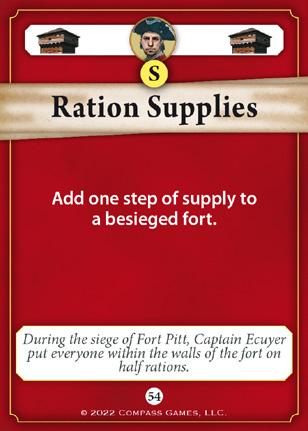


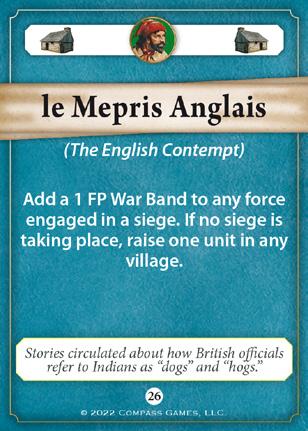
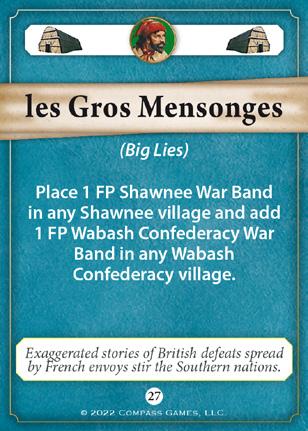
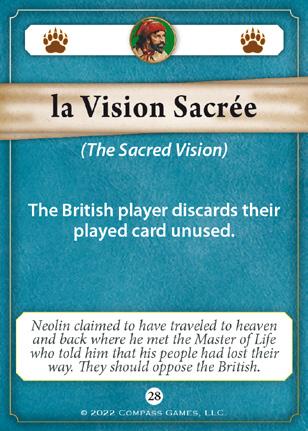
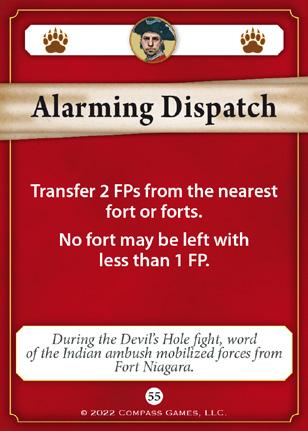

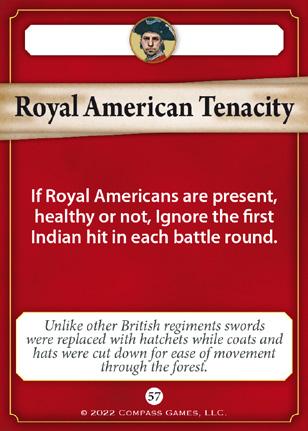
Current Points – British 15 VPs, Indians 12 VPs, 4 razed forts, 2 captives and a 35 Guinea British loan
Both sides replenish card hand up to 8 cards:
British Movement & Battles
1 The Fort Niagara Force
British Leader Johnson and 1 FP of Royal Americans detach from force C and remain in Fort Niagara. The rest of Force C joins with the Indian Allies in the portage space outside the fort and moves against the Mississauga and Huron Force.
Defender Ambush – The Nations Player chooses to retreat instead of Ambushing.
Defender Retreat – The Indians roll a die resulting in 2. Since the Indians are behind in points one is subtracted from the die roll. The final retreat roll is 1 – a successful retreat. The Missisauga and Huron retreat to an adjacent space. But in doing so they sacrifice 2 VPs (1 VP for every 5 FP or portion thereof that retreat).
Cards – No combat, no card play.
Indian Arms Point –The Arms points now stand at 4.
1st Round of Combat – N/A
2nd Round of Combat – N/A
Retreat Option – N/A
Current Points – British 15 VPs, Indians 10 VPs, 4 razed forts, 2 captives and a 35 Guinea British loan
2 Fort Bedford


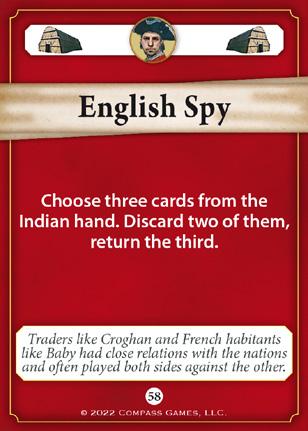



The 2 FP of Royal Americans from Fort Bedford reinforce Fort Dinwiddie.
3 Fort Cumberland
The 2 FP of Royal Americans in Fort Cumberland reinforce Fort Ligonier.
4 Fort Augusta
The entire force moves from Fort Augusta to attack a Lenape village with reinforcements from ...
5 Fort Allan
1 FP of Regulars from Fort Allan joins the attack on the same Lenape village with reinforcements from ...
6 Philadelphia #1
1 FP of Royal Americans from Force D in Philadelphia also joins the attack on the same Lenape village. Villages have no defense. If the British Force has a minimum of 4 FP, the village is destroyed.
➢ This village is destroyed. A Razed village marker is placed on the space.
➢ The British record 1VP.
Current Points – British 16 VPs, Indians 10 VPs, 4 razed forts, 1 razed village, 2 captives and a 35 Guinea British loan
7 Philadelphia #2
Disperse the remainder of British Force D as follows:
➢ To Ft. Cumberland: Colonel Bradstreet, 2 FP of Black Watch, 1 Artillery, & 4 Supply.
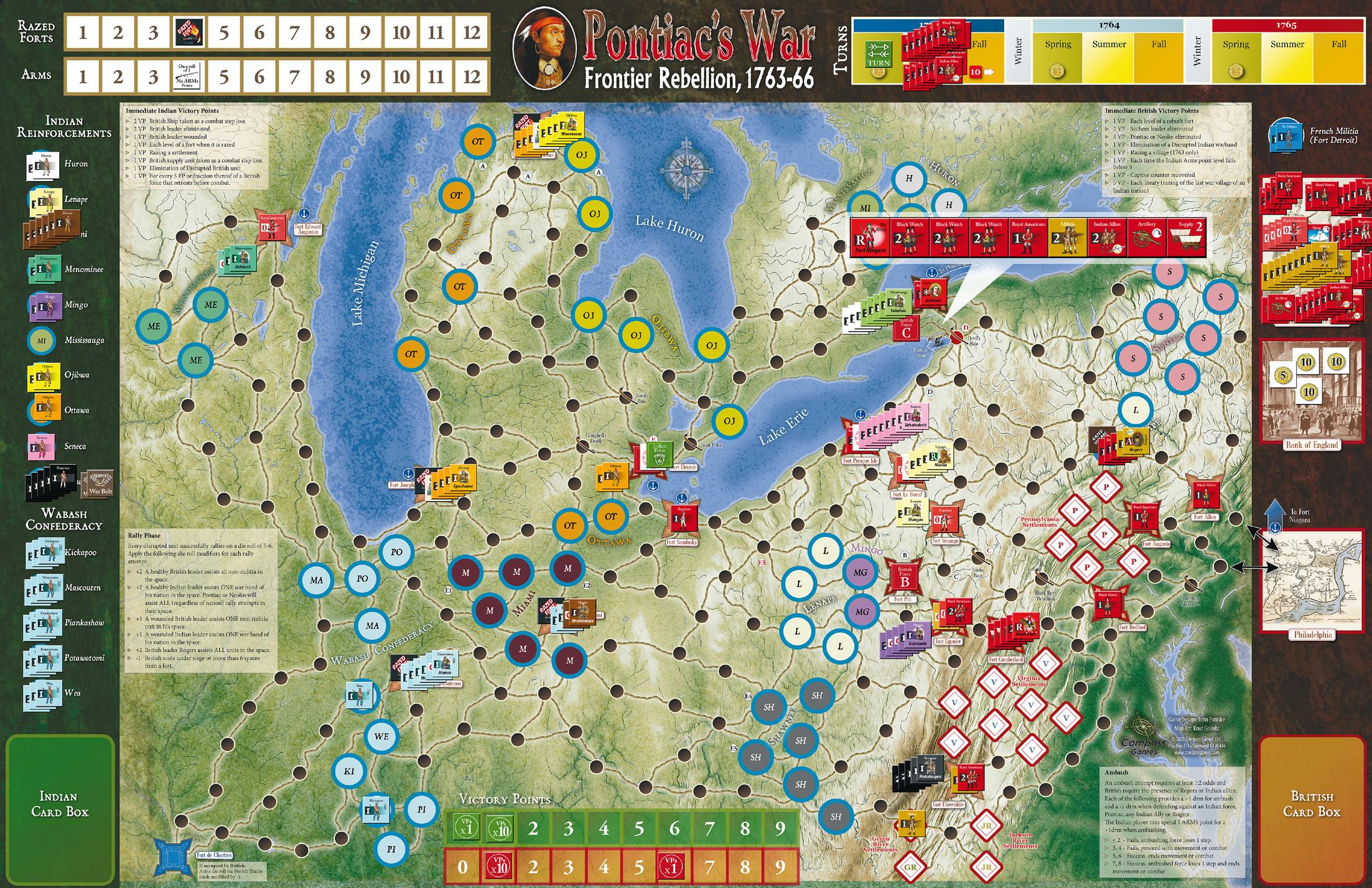
➢ To Ft. Bedford: 1 FP of Black Watch
➢ To Ft. Augusta: 1 FP of Royal Americans
➢ To Ft. Allen: 1 FP of Black Watch
Current Points – British 16 VPs, Indians 10 VPs, 4 razed forts, 1 razed village, 2 captives and a 35 Guinea British loan
No cards were played during the British turn so the card hands remain the same.
Supply is currently no problem. The Indians are never out of supply and all the British are currently close to their forts. However, there are three forts under siege. Due to siege attrition, the British lose one combat step for each three combat steps, or portion thereof, rounded up in every besieged force. Artillery and Ships have only one step each. Healthy troops and officers have two steps. Supply steps are not counted.
Besieged Fort Detroit – With 11 steps present (Officer steps and ships included), four steps must be removed. Before any units are removed all healthy units must first be flipped. To account for the

four steps, The British flips one Royal American, Wounds Gladwin, Wounds Campbell and removes the artillery piece. The wounding of any officer and any piece that is removed awards 1 VP. Attrition at Fort Detroit accounts for 3 Indian VPs.
Current Points – British 16 VPs, Indians 13 VPs, 4 razed forts, 1 razed village, 2 captives and a 35 Guinea British loan
Besieged Fort Le Boeuf – With one step present, the British must lose at least one FP. The single disrupted Regular is removed to the Reserves. The Fort is no longer defended so it is razed. Nations Player earns 2 VPs: 1 VP for the removed unit and 1 VP for the one value fort. One Arms point is earned and the Nations Player rolls for captives. The die roll results in a 5. One captive is earned.
Current Points – British 16 VPs, Indians 15 VPs, 5 razed forts, 1 razed village, 3 captives and a 35 Guinea British loan
Besieged Fort Presque Isle - With four steps present, two steps must be removed. The British flip two Royal Americans.
Current Points – British 16 VPs, Indians 15 VPs, 5 razed forts, 1 razed village, 3 captives and a 35 Guinea British loan
Besieged Fort Presque Isle - With four steps present, two steps must be removed. The British flip two Royal Americans.



The British are in no position to rebuild any of their destroyed forts.
Both sides Rally
All disrupted units are rolled for. A unit without a leader’s help rallies on a roll of 5-6. A leader assisting more than one unit to rally adds +1 to the die roll. A leader rallying only a single unit adds +2 to the die roll. Other leaders in the same space may attempt to rally units that another leader failed to rally.
Indian Rallies:
On razed Fort Ouiatenon / WC-Mascouten – Manso adds +2 to heal one warband and rolls a 6. Warband is flipped back to healthy.
SW of Fort Ligonier / MG-Mingo – Guyasuta adds +1 to heal two warbands and rolls a 3 and 6. Two warrior bands are rallied and flipped.
SW of Fort Edward Augustus / ME-Menominee – Oshkosh adds +2 to heal one warrior band and rolls a 5. The warrior band is rallied and flipped.
On razed Fort Miami / M-Miami – Michiquiniqua adds +2 to heal one Miami warrior band and rolls a 3. The warrior band is rallied and flipped.

British Rallies:
Fort Presque Isle – No officer to help rally the one disrupted Regular. The British rolls a 1 and rally fails.
Fort Ligonier – No officer to help rally the two Regulars and the 1 Militia. The British rolls a 2, 4 and 5. One Regular is rallied and flipped.
British: Fort LeBeouf – No officer to help rally the one Regular and the one Royal Americans and rolls 1 and 3. Rally fails.
British: Fort Detroit – Wounds Major Gladwin adds +2 to rally one British Royal American and rolls a 6. One disrupted Royal American is rallied and flipped. Wounded Captain Campbell adds +2 to the other British Royal American, rolls a 1 and fails.
Current Points – British 16 VPs, Indians 15 VPs, 5 razed forts, 1 razed village, 3 captives and a 35 Guinea British loan
Leader Health
Three leaders - Major Gladwin, Captain Dalyell and Captain Campbell in Fort Detroit - are wounded. A die is rolled for each. On a 1 the officer dies. On a 2-3 his health does not change. On a 4-6 he heals and is flipped back to his healthy side. The die result is a 3, so no change. The first die is rolled for Major Gladwin. The die result is a 3, so no change. The second die is rolled for Captain
Dalyell. The die result is a 1, so he succumbs to his wounds and his counter is removed from the game. A Replacement Officer is placed in Philadelphia. The third die is rolled for Captain Cambell and the result is a 6. So he has fully recovered and his counter is flipped to the healthy side.
Current Points – British 16 VPs, Indians 15 VPs, 5 razed forts, 1 razed village, 3 captives and a 35 Guinea British loan
If this were Winter this would be the time to lift sieges and return to villages and forts.
Determine if all Victory Points have been recorded this turn.
Reviewing card results and battles and battle casualties would be a good idea before the next turn.
Move the Turn Marker to the next season – from Spring to the Summer – on the Turn Track.
I hope you enjoyed this run-through!
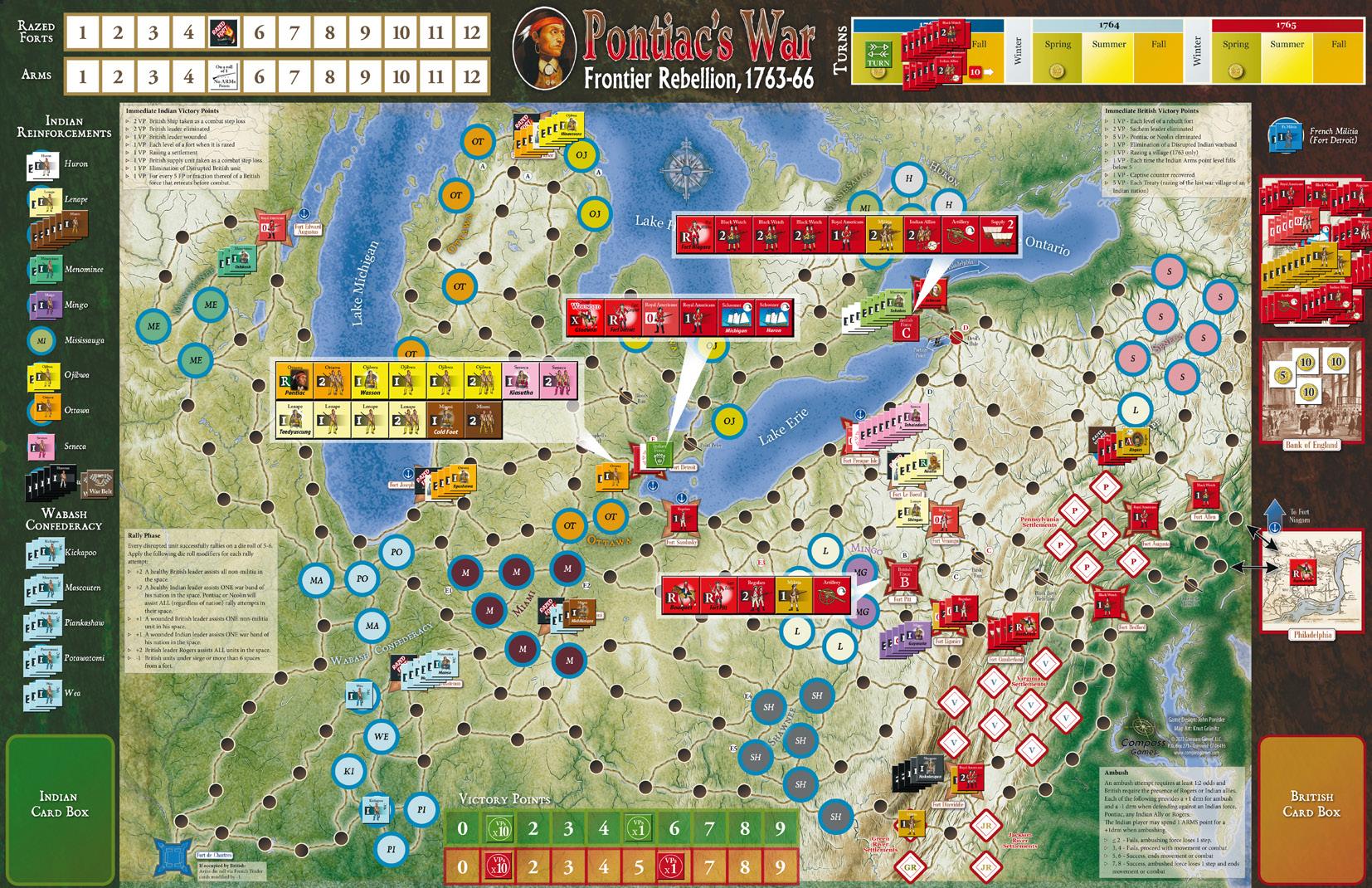
Replaces chart on Player Aid
Procedure: Roll 1 die. Retreat occurs on a modified 1. Note that all DRMs are cumulative. Either player may have up to -3 on the roll.
Die Roll Modifiers - Nations Player
If Nations player is behind in VP:
• -1 for being behind in VP
• -1 if any Sachem is present
• -2 if the Sachem present is Pontiac or Neolin
Die Roll Modifiers - British Player
If Indian Allies or Rogers are present:
-1 if behind in VP
-1 if Indian Allies present
-1 if Rogers present

Automatic Retreats - No Roll Required
If the British force:
• Is faced with 2:1 odds
• Is accompanied by Johnson
If the Nations force:
• Is faced with the loss of 5+ steps in a single round of combat.